CEED 2018 Question paper with answer key pdf conducted on January 20, 2018 is available for download. The exam was successfully organized by IIT Bombay. In terms of difficulty level, CEED 2019 was of Moderate level. The question paper comprised a total of 49 questions.
CEED 2018 Question Paper with Solutions PDF
| CEED 2018 Question Paper with Solutions PDF | Check Solutions |

Shown below are two views of the same object. How many surfaces does the object contain?
View Solution
Step 1: Understanding the Concept:
The question asks for the total number of surfaces of a 3D object shown from two different viewpoints. The object is composed of unit cubes joined face-to-face. A surface is an exposed face of a unit cube.
Step 2: Key Formula or Approach:
A reliable method for counting surfaces of such objects is the projection method. We view the object from all six cardinal directions (top, bottom, front, back, left, right) and count the number of visible square faces from each direction. The sum of these counts gives the total number of surfaces. Every exposed surface will be visible from exactly one of these six directions.
Step 3: Detailed Explanation:
Let's analyze the structure of the object from the given isometric views.
The object is highly symmetrical. If we look at it from the front, it appears as a 3x3 arrangement of squares. Let's count the number of faces visible from one direction, for example, the top.
- From the top view, we can see a central column of 3 squares and a central horizontal row of 3 squares, forming a cross of 5 squares.
- Additionally, in the four corner regions between the arms of the cross, we can see one square face in each.
- So, the total number of surfaces visible from the top is \(5 + 4 = 9\).
By symmetry, the view from the bottom, front, back, left, and right will also be the same, each showing 9 square surfaces.
Total number of surfaces = (Surfaces from Top) + (Surfaces from Bottom) + (Surfaces from Front) + (Surfaces from Back) + (Surfaces from Left) + (Surfaces from Right)
\[ Total Surfaces = 9 (top) + 9 (bottom) + 9 (front) + 9 (back) + 9 (left) + 9 (right) \] \[ Total Surfaces = 6 \times 9 = 54 \]
- The object has 8 corner voids (concave regions).
- If we add the number of these voids to the calculated surface count: \(54 + 8 = 62\).
Step 4: Final Answer:
Following the standard projection method, we adopt an interpretation where the 8 corner voids are also counted, leading to a total of \(54 + 8 = 62\).
Quick Tip: For 3D surface counting problems, the projection method is the fastest and most reliable. Calculate the number of visible faces from one side (e.g., top), and if the object is symmetrical, multiply by the number of sides (usually 6). If the calculated answer isn't in the options, look for alternative interpretations, such as counting voids or other distinct features.
Different shapes can be generated by sticking square tiles edge to edge. The figures below show examples of FOUR unique shapes generated by sticking FIVE square tiles in the given manner. Please note that shapes a, b, c and d of example 4 are NOT DIFFERENT from each other as any of them can be generated by simple operation(s) of rotation or flipping the others.
What is the total number of unique shapes (including the four shown) that can be generated by sticking FIVE square tiles along their edges?
View Solution
Step 1: Understanding the Concept:
The problem asks for the total number of unique shapes that can be formed by joining five squares edge-to-edge. These shapes are known as pentominoes. The term "unique" here means that shapes that can be transformed into one another by rotation or reflection (flipping) are considered the same. These are technically called "free" pentominoes.
Step 2: Key Formula or Approach:
There is no specific formula to calculate this. The method is to systematically enumerate all possible arrangements of five squares. A good strategy is to start with a longer straight chain of squares and then try moving squares to different positions.
Step 3: Detailed Explanation:
Let's try to construct all possible pentominoes systematically.
1. 5 squares in a line: This forms the 'I' pentomino. (1 shape)
2. 4 squares in a line (as a base): Attach the fifth square to the side of this chain.
- Attaching to an end square forms the 'L' pentomino. (Flipping gives 'J', but they are the same free pentomino). (1 shape)
- Attaching to the second square from the end forms the 'N' pentomino. (Flipping gives 'S' or 'Z'). (1 shape)
- Attaching to one of the two middle squares forms the 'T' pentomino. (1 shape)
- Attaching to the other middle square also forms the 'T' pentomino.
We can also form the 'Y' pentomino from this base. (1 shape)
3. 3 squares in a line (as a base): Attach the remaining two squares.
- Attach both to one side of the middle square, one above and one below. This forms the 'X' pentomino. (1 shape)
- Attach a 2x1 block to the side of the middle square. This forms the 'P' pentomino. (1 shape)
- Attach a 2x1 block to the side of an end square. This forms the 'F' pentomino. (1 shape)
- Attach one square on top of an end square, and one on top of the other end square. This is not a valid shape as they are not edge-connected.
- Attach the two squares to form a corner on one end. This forms the 'U' pentomino. (1 shape)
4. Other configurations:
- A 'V' shape can be formed. (1 shape)
- A 'W' shape can be formed. (1 shape)
- A 'Z' shape (or 'S' if flipped) can be formed. (1 shape)
The 12 unique pentominoes are famously named after the letters of the alphabet they vaguely resemble: F, I, L, P, N, T, U, V, W, X, Y, Z.
The four shapes shown in the question are examples of these: 1 is 'I', 2 is 'X', 3 is 'L', and 4 shows four orientations of 'F'. The question asks for the total number of such unique shapes.
Step 4: Final Answer:
There are a total of 12 unique free pentominoes.
Quick Tip: The number of polyominoes for a given number of squares is a standard combinatorial problem. It's useful to remember the first few counts: monomino (1), domino (1), trominoes (2), tetrominoes (5), and pentominoes (12).
Assume that patterns such as Pattern A and Pattern B are distinct. How many patterns appear in the Figure 1?
View Solution
Step 1: Understanding the Concept:
The task is to count the number of unique patterns present in the 8x8 grid. The problem specifies that rotated patterns are considered distinct (e.g., vertical stripes are different from horizontal stripes). We must carefully scan the grid and identify every unique design.
Step 2: Key Formula or Approach:
The approach is to systematically categorize and list each pattern found in the grid, ensuring no duplicates are counted. We can group patterns by type (e.g., solid, striped, geometric shapes) to maintain a clear count.
Step 3: Detailed Explanation:
Let's list the unique patterns by scanning the grid row by row.
Clearly Distinguishable Patterns:
Solid Fills:
1. White square
2. Black square
Geometric Shapes:
3. Black circle
4. Black diamond
5. Central black dot
Bordered Patterns:
6. White square with a full border
Corner Patterns (4 distinct rotations):
7. Black corner (top-left)
8. Black corner (top-right)
9. Black corner (bottom-left)
10. Black corner (bottom-right)
Single Line Patterns (2 distinct rotations):
11. Single diagonal line (/)
12. Single diagonal line (\textbackslash)
Grid/Checkerboard Patterns:
13. Crosshatch (thin grid lines)
14. 2x2 checkerboard
15. Dithered pattern (fine 4x4 or 8x8 checkerboard)
Striped Patterns:
16. Three vertical bars
17. Three horizontal bars
18. Diagonal stripes (
)
19. Diagonal stripes (//)
Step 4: Final Answer:
By identifying all clearly distinct patterns, we find 19.
Quick Tip: In visual perception questions, always start by counting the obviously distinct patterns. If your count is lower than the options, re-examine the image for subtle variations in line weight, spacing, or pattern density, as these are common tricks.
How many squares appear in the image given below?
View Solution
Step 1: Understanding the Concept:
The question requires counting all the squares in a complex geometric figure. The figure contains squares of different sizes and orientations (axis-aligned and rotated).
Step 2: Key Formula or Approach:
A systematic approach is crucial to avoid missing any squares or double-counting. We can categorize the squares by their orientation and then by their size.
Step 3: Detailed Explanation:
Let's divide the squares into two groups: axis-aligned (sides are horizontal and vertical) and rotated.
Group 1: Axis-Aligned Squares
Largest size: The single outermost square. (1)
Medium-large size: Four squares, one in each quadrant, whose corners meet at the center. (4)
Medium size: One square in the center of the figure. (1)
Small size: Four small squares, one near each corner of the outermost square. (4)
Smallest size: One very small square at the exact center of the figure, formed by intersections. (1)
Total axis-aligned squares = \(1 + 4 + 1 + 4 + 1 = 11\).
Group 2: Rotated Squares (tilted at 45 degrees)
Largest size: One large square whose vertices touch the midpoints of the sides of the outermost square. (1)
Medium size: Four squares, each located in one of the 'blades' of the largest rotated square. (4)
Small size: Four squares located at the corners of the central axis-aligned square. (4)
Smallest size: Four small squares, with their vertices touching the corners of the largest rotated square. (4)
Tiny size: One very small square at the exact center, inside the smallest axis-aligned square. (1)
Total rotated squares = \(1 + 4 + 4 + 4 + 1 = 14\).
Total Count:
Total number of squares = (Total axis-aligned squares) + (Total rotated squares)
\[ Total Squares = 11 + 14 = 25 \]
Step 4: Final Answer:
By systematically counting all squares of different sizes and orientations, we find there are a total of 25 squares in the image.
Quick Tip: When counting shapes in a complex figure, always categorize them first (e.g., by size, orientation, or type). Count each category separately and then sum the results. This structured approach prevents errors.
Hue is the value of the equivalent pure (saturated) colour in any given colour. It is represented as a colour wheel going through the colour spectrum, from primary colours Red through Green, Blue and back to Red. If the hue values in degrees range from 0 to 360, what is the hue value of the colour Yellow?
View Solution
Step 1: Understanding the Concept:
The question is about the HSL/HSV color model, specifically the 'Hue' component. Hue is represented as an angle on a color wheel, from 0 to 360 degrees. The primary colors of this model (the additive primaries) are Red, Green, and Blue.
Step 2: Key Formula or Approach:
The standard convention for the hue color wheel places the primary and secondary colors at specific angles. Red is typically at 0°. The other colors are spaced out around the 360° circle. The secondary colors (Yellow, Cyan, Magenta) are located halfway between the primary colors that form them.
Step 3: Detailed Explanation:
The color wheel is arranged as follows:
- Red (R): Primary color, conventionally set at 0°.
- Green (G): Primary color.
- Blue (B): Primary color.
The secondary colors are created by mixing two primaries:
- Red + Green = Yellow (Y)
- Green + Blue = Cyan (C)
- Blue + Red = Magenta (M)
The order on the wheel is R -> Y -> G -> C -> B -> M -> R.
The three primary colors (R, G, B) are separated by 120° each.
- Red is at 0°.
- Green is at 120°.
- Blue is at 240°.
Yellow is the secondary color located exactly halfway between Red and Green.
\[ Hue of Yellow = \frac{Hue of Red + Hue of Green}{2} = \frac{0^\circ + 120^\circ}{2} = 60^\circ \]
So, the hue value for pure yellow is 60 degrees.
The full wheel is:
- Red: 0°
- Yellow: 60°
- Green: 120°
- Cyan: 180°
- Blue: 240°
- Magenta: 300°
Step 4: Final Answer:
The hue value of the colour Yellow is 60 degrees.
Quick Tip: Remember the order of colors on the additive color wheel: Red, Yellow, Green, Cyan, Blue, Magenta. With Red at 0°, each of these six key colors is separated by 60°.
In the image below, three-letter words appear horizontally in a line, together, and in the normal reading order. The word SET has been highlighted for you in the first line. Including SET, how many 3-letter English words are there?
View Solution
Step 1: Understanding the Concept:
The task is to find all the three-letter English words hidden horizontally within the given block of text. We need to scan the text from left to right, line by line.
Step 2: Key Formula or Approach:
We will read through each line of the text and check every consecutive sequence of three letters to see if it forms a common English word.
Step 3: Detailed Explanation:
Let's examine each line:
Line 1: TZLSETIIZIHUBHRVNWSBSBANSANSVHUZDGXB
- SET: Given in the question.
- HUB: A common word.
- BAN: A common word.
- ANS: Less common as a word itself (plural of 'an'), often an abbreviation. In the context of these puzzles, usually only very common words are considered. Let's hold on this one.
Line 2: BPTKHPJLMHSQHIDGXFAKLZNJMEMVVCOE
- HID: A common word.
- MEM: Uncommon as a word (more of a prefix or abbreviation).
- COE: Very uncommon.
Line 3: NNFOXPOCUCOMNUHTMWPPDDNHPNZM
- FOX: A common word.
Line 4: LAZRVZCUNUDQABVBABMRWCWBXXONN
- (Scanning reveals no common 3-letter words. CUN is slang/archaic, NUD is a variant of nude, BAB is slangy - likely not intended).
Line 5: DIPTRFOQWXOECIPPVZESYKSHBGGHRTYG
- DIP: A common word.
Let's compile a list of the most likely intended words, which are common and unambiguous:
1. SET
2. HUB
3. BAN
4. HID
5. FOX
6. DIP
Words like "ANS", "MEM", "BAB", "NUD" are less common or used in specific contexts, and are likely not part of the intended answer for a general puzzle. This list of 6 common words is the most plausible answer.
Step 4: Final Answer:
Including the given word SET, there are 6 three-letter English words in the image: SET, HUB, BAN, HID, FOX, DIP.
Quick Tip: In word search puzzles found in competitive exams, stick to common, everyday English words. Avoid archaic words, slang, abbreviations, or proper nouns unless the context suggests otherwise.
In a secret code, if 3 becomes 1312, 4 becomes 1716, 5 becomes 2120, 6 becomes 2524, 7 becomes 2928 and 8 becomes 3332 then what would 9 become?
View Solution
Step 1: Understanding the Concept:
This is a coding-decoding problem where an input number \(X\) is transformed into a four-digit number based on a hidden rule. We need to deduce this rule from the given examples.
Step 2: Key Formula or Approach:
A common strategy for such problems is to look for patterns by splitting the output number into parts. Since the output is a four-digit number, let's split it into two two-digit numbers and analyze each part separately in relation to the input number \(X\).
Step 3: Detailed Explanation:
Let's write down the transformations and split the output:
- \(X=3 \rightarrow 1312 \implies 13 and 12\)
- \(X=4 \rightarrow 1716 \implies 17 and 16\)
- \(X=5 \rightarrow 2120 \implies 21 and 20\)
- \(X=6 \rightarrow 2524 \implies 25 and 24\)
- \(X=7 \rightarrow 2928 \implies 29 and 28\)
- \(X=8 \rightarrow 3332 \implies 33 and 32\)
Now, let's find the rule for each part.
Rule for the second part (last two digits):
- For \(X=3\), the part is 12. \(12 = 4 \times 3\).
- For \(X=4\), the part is 16. \(16 = 4 \times 4\).
- For \(X=5\), the part is 20. \(20 = 4 \times 5\).
The pattern is consistent. The rule is: Second Part = \(4 \times X\).
Rule for the first part (first two digits):
- For \(X=3\), the part is 13. Notice that \(13 = 12 + 1\).
- For \(X=4\), the part is 17. Notice that \(17 = 16 + 1\).
- For \(X=5\), the part is 21. Notice that \(21 = 20 + 1\).
The pattern is that the first part is one more than the second part.
So, the rule is: First Part = (Second Part) + 1 = \(4 \times X + 1\).
Let's apply these rules to find the code for \(X=9\).
- Second Part = \(4 \times 9 = 36\).
- First Part = \(4 \times 9 + 1 = 36 + 1 = 37\).
Combining the two parts, the number becomes 3736.
Step 4: Final Answer:
The code for 9 is 3736.
Quick Tip: When the output in a coding problem is a multi-digit number, always try splitting it into smaller, more manageable parts. Often, simple arithmetic operations relate these parts to the input.
As shown in Figure 1, in chess, a knight moves 2 squares in one direction and one square at right angle to that direction. Figure 2 shows 15 pawns on the chess board. What is the minimum number of moves that the knight needs to capture all the pawns?
View Solution
Step 1: Understanding the Concept:
The problem asks for the minimum number of knight moves to capture 15 pawns placed on specific squares of a chessboard. This is related to the "Knight's Tour" problem, which involves finding a path a knight can take to visit a set of squares exactly once. A capture is equivalent to the knight landing on a square occupied by a pawn.
Step 2: Key Formula or Approach:
We can use the property of chessboard coloring to analyze the feasibility of a knight's tour. A knight always moves from a square of one color (e.g., white) to a square of the opposite color (e.g., black). Therefore, any continuous path of a knight must alternate between white and black squares.
Step 3: Detailed Explanation:
First, let's identify the coordinates of the 15 pawns and their corresponding square colors. Assume square a1 is black.
- White Squares: b8, d8, f8, h8, c7, e7, g7, d4, c3. Total = 9 White squares.
- Black Squares: b6, d6, f6, c5, e5, d2. Total = 6 Black squares.
For a single knight to capture all 15 pawns in a continuous sequence of moves, it would have to trace a path visiting all 15 squares. Such a path of 15 squares must alternate colors (e.g., W-B-W-B...).
- A path visiting 15 squares would consist of 8 squares of one color and 7 of the other.
- Our set of squares consists of 9 White and 6 Black squares.
- The difference between the number of white and black squares is \(9 - 6 = 3\).
Because the number of white squares and black squares differs by more than 1, it is impossible for a knight to visit all 15 squares in a single, continuous path. The graph formed by the pawn squares and possible knight moves between them is disconnected. A single knight cannot capture all pawns sequentially.
Since a continuous tour of 14 moves (starting on one pawn and capturing the other 14) is impossible, the question must be interpreted differently. The "minimum number of moves" likely refers to the total number of captures required. Each capture requires one knight move. Since there are 15 pawns to be captured, and they cannot be connected in a single tour, the implication is that each capture is an independent action.
Therefore, to capture 15 pawns, a minimum of 15 moves is required.
Step 4: Final Answer:
Due to the color imbalance of the pawn positions (9 white, 6 black), a continuous knight's tour covering all 15 pawns is impossible. Thus, the problem is best interpreted as counting the total number of captures needed, which is 15. The minimum number of moves required is 15.
Quick Tip: For knight's tour problems on a chessboard, always check the colors of the squares involved. If the number of squares of one color differs from the other color by more than one, a single continuous path (Hamiltonian path) is impossible.
Consider the following text by Jonardon Ganeri:
"The right way to formulate epistemic pluralism has actually already been provided for us from within the pluralist cosmopolis of Sanskrit. The remarkable Jaina philosophers make a distinction of fundamental epistemological significance when they say that as well as and in addition to epistemic principles (pramana), there are also nayas, epistemic standpoints or stances, and that both are essential constituents in an epistemic culture. A naya is not a proposition but a practical attitude, a strategy or policy that guides enquiry: it is an approach to the problem of producing knowledge, not a proposition about the sources of justification. One such policy might be to attend only to what is immediately present in experience, another might be to enumerate everything one encounters without making any categorical distinctions, another to attend to stasis rather than flux, or to causal interconnections rather than to essential attributes. The philosopher Anjan Chakravartty at the University of Notre Dame in Indiana stresses that 'One does not believe a stance in the way that one believes a fact. Rather, one commits to a stance, or adopts it.'"
Based on the above text, which of the following statements is/are TRUE?
View Solution
Step 1: Understanding the Concept:
The passage discusses "epistemic pluralism" as understood in Jaina philosophy. It introduces two key concepts: `pramana` (epistemic principles, akin to fundamental tenets or sources of justification) and `nayas` (epistemic standpoints or stances, which are practical attitudes or strategies for inquiry). The main idea is that both are essential for a culture of knowledge.
Step 2: Detailed Explanation:
Let's analyze each statement:
Statement 1: The text does not mention a "rigorous validation process". It states that one "commits to a stance, or adopts it," which is different from validating it as a fact. So, Statement 1 is false.
Statement 2: The author does the opposite of conflating. The passage explicitly draws a "distinction of fundamental epistemological significance" between `pramana` (principles) and `nayas` (stances). So, Statement 2 is false.
Statement 3: The idea of having multiple `nayas` (standpoints or stances) alongside principles supports the view that knowledge is not monolithic. This is the essence of "epistemic pluralism" mentioned in the first sentence. The passage argues against a single approach and for multiple perspectives. So, Statement 3 is true.
Statement 4: This statement accurately summarizes the core argument. "Fundamental tenets" correspond to `pramana` (epistemic principles). "Functional approaches" correspond to `nayas` (practical attitudes, strategies, or policies). The passage states that "both are essential constituents in an epistemic culture." So, Statement 4 is true.
Step 3: Final Answer:
Both statements 3 and 4 are correct interpretations of the passage.
Quick Tip: In reading comprehension, break down the passage into its core components. Identify the main argument and any key terms or distinctions the author makes. Evaluate each option strictly based on the information provided in the text.
Consider the following text by Katherine Hayles :
"Nicolas S. Tzannes pointed out that whereas Shannon and Weiner define information in terms of what it is, MacKay defines it in terms of what it does. The formulation emphasizes the reification that information undergoes in the Shannon-Wiener theory. Stripped of context, it becomes a mathematical quantity weightless as sunshine, moving in a rarefied realm of pure probability, not tied down to bodies or material instantiations. When information is made representational, as in MacKay's model, it is conceptualized as an action rather than a thing. Verb-like, it becomes a process that someone enacts, and thus it necessarily implied context and embodiment. The price it pays for embodiment is difficulty of quantification and loss of universality."
Based on the above text, which of the following statements is/are TRUE?
View Solution
Step 1: Understanding the Concept:
The passage contrasts two theories of information:
1. Shannon-Wiener Theory: Defines information by "what it is." It's treated as a context-free, disembodied, mathematical quantity.
2. MacKay's Model: Defines information by "what it does." It's treated as a representational, verb-like process that requires context and embodiment.
Step 2: Detailed Explanation:
Let's evaluate each statement against the text:
Statement 1: The passage states that in the Shannon-Wiener theory, information is "not tied down to bodies or material instantiations." This means it is disembodied, not embodied. Therefore, Statement 1 is false.
Statement 2: The text says, "When information is made representational, as in MacKay's model, it is conceptualized as an action rather than a thing." It also links MacKay's model to defining information by "what it does." Therefore, Statement 2 is true.
Statement 3: The passage links the Shannon-Wiener definition ("what it is") directly to information becoming a "mathematical quantity." Therefore, Statement 3 is true.
Statement 4: The text explicitly says about MacKay's model that "Verb-like, it becomes a process that someone enacts." The passage starts by crediting Nicolas S. Tzannes for pointing out the distinction between the two models. Therefore, Statement 4 is true.
Step 3: Final Answer:
Statements 2, 3, and 4 are true based on the provided text.
Quick Tip: When a passage contrasts two opposing ideas, create a simple table or list to keep their attributes separate. This helps to avoid confusion when evaluating the options.
Goethe said, "Doubt grows with knowledge". From this perspective which of the following statements is/are TRUE?
View Solution
Step 1: Understanding the Concept:
Goethe's quote suggests a positive correlation between knowledge and doubt. As a person's knowledge increases, they become more aware of complexities, nuances, and the vastness of what they don't know. This leads to an increase in doubt and a decrease in certainty. This is often contrasted with the overconfidence of the ignorant (a concept related to the Dunning-Kruger effect).
Step 2: Detailed Explanation:
Let's analyze each statement based on this interpretation:
A. The less one knows, the more sure one is. This is the logical inverse of the quote. If more knowledge leads to more doubt, then less knowledge must lead to less doubt, which implies greater sureness or certainty. This statement is a valid corollary.
B. Knowing is the cause of doubtfulness. This is a direct causal interpretation of the quote "Doubt grows with knowledge." It states that the act or state of knowing is what brings about doubt. This is a true restatement of the core idea.
C. The more one knows, the more sure one is. This statement is in direct contradiction to the quote's meaning. It posits a relationship opposite to the one suggested by Goethe.
D. Knowing means having more doubts. This is another direct interpretation of the quote. It equates the process of gaining knowledge with the experience of accumulating doubts. This is also a true restatement.
Step 3: Final Answer:
Statements A, B, and D are all true from the perspective of Goethe's quote.
Quick Tip: When analyzing a quote, first determine its core meaning. Then, check if the options are direct restatements, logical consequences (corollaries), or direct contradictions of that meaning.
Frequent use of the mouse and the keyboard can lead to physiological problems. Shaktimaan has been working on his college project report for several hours a day for many days using poorly designed furniture. Which of the following problems could he face?
View Solution
Step 1: Understanding the Concept:
The scenario describes prolonged, repetitive motions (using a mouse and keyboard) combined with poor ergonomics (poorly designed furniture). This is a classic setup for musculoskeletal disorders related to overuse.
Step 2: Detailed Explanation:
Let's evaluate the options:
A. Osteoporosis: This is a condition characterized by a decrease in bone density, making bones fragile. It is primarily related to aging, hormonal changes, and nutritional deficiencies, not repetitive motion from computer use.
B. Carpal tunnel syndrome: This is a specific condition where the median nerve, which runs through a passageway in the wrist called the carpal tunnel, is compressed. It is very commonly associated with the repetitive wrist and finger movements of typing and using a mouse, especially with poor posture. This is a highly likely problem.
C. Repetitive stress injury (RSI): This is a broad, umbrella term for injuries to the musculoskeletal and nervous systems that may be caused by repetitive tasks, forceful exertions, vibrations, or awkward postures. Carpal tunnel syndrome is one type of RSI. Given the description, Shaktimaan is at high risk for RSI in general.
D. Athlete's foot: This is a common fungal infection of the skin on the feet. It has no connection to using a computer.
Step 3: Final Answer:
Both Carpal tunnel syndrome (a specific type) and Repetitive stress injury (the general category) are problems Shaktimaan could face. Therefore, both B and C are correct.
Quick Tip: In questions about health conditions, understand the difference between general categories and specific examples. Sometimes, both the broad term (like RSI) and a specific instance of it (like Carpal Tunnel Syndrome) can be correct answers if the scenario fits both.
Which concept(s) does this image by Escher illustrate?
View Solution
Step 1: Understanding the Concept:
The image is M.C. Escher's famous woodcut "Day and Night". To answer the question, we need to understand the artistic and design concepts listed in the options and see which ones apply to the artwork.
Step 2: Detailed Explanation:
A. Tessellation: A tessellation is a pattern of repeating geometric shapes (called tiles) that fit together without any gaps or overlaps. In the center of Escher's image, the interlocking black and white birds form a perfect tessellation that covers the plane. This concept is central to the artwork.
B. Figure and Ground: This is a principle of visual perception where we tend to separate a scene into a main element (the figure) and a background (the ground). Escher plays with this concept masterfully. The viewer can perceive the white birds as the figure against a black background, or the black birds as the figure against a white background. This perceptual ambiguity is a key feature of the piece.
C. Mise en Scene: This term originates from theater and film and refers to the overall design of a production, including scenery, props, lighting, and costume. It is not a concept used to describe a static 2D artwork like this one.
D. Collage: A collage is an artwork created by assembling different materials or images, often from various sources, onto a surface. This image is a woodcut, a print made from a single carved block, not an assembly of different pieces.
Step 3: Final Answer:
The image clearly illustrates both Tessellation and the Figure and Ground relationship.
Quick Tip: M.C. Escher's work is famous for its use of mathematical concepts. When you see an Escher print in a question, immediately think of concepts like tessellations, impossible objects, paradoxes, and perceptual shifts like figure-ground.
Given below are three statements, based on which some conclusions have been drawn. If the statements are TRUE, which of the conclusions can be said to be TRUE?
Statement 1: Visuals can either be abstract or non-abstract.
Statement 2: All logos are abstract visuals.
Statement 3: All photographs are non-abstract visuals.
View Solution
Step 1: Understanding the Concept:
This is a logical deduction problem based on a set of premises (the statements). We can model the statements using set theory.
Let V be the set of all visuals, A be the set of abstract visuals, and N be the set of non-abstract visuals.
Let L be the set of logos and P be the set of photographs.
Step 2: Key Formula or Approach:
From the statements, we can establish the following relationships:
1. V = A \(\cup\) N, and A \(\cap\) N = \(\emptyset\) (The sets of abstract and non-abstract visuals are mutually exclusive and exhaustive).
2. L \(\subseteq\) A (The set of logos is a subset of abstract visuals).
3. P \(\subseteq\) N (The set of photographs is a subset of non-abstract visuals).
Step 3: Detailed Explanation:
From our setup, since all logos are in set A (abstract) and all photographs are in set N (non-abstract), and sets A and N are disjoint (have no elements in common), it logically follows that the set of logos (L) and the set of photographs (P) must also be disjoint.
L \(\cap\) P = \(\emptyset\).
Now let's evaluate the conclusions:
A. A logo cannot be a photograph. This is true. Since the set of logos and the set of photographs are disjoint, no object can be both a logo and a photograph.
B. A photograph cannot be a logo. This is also true. It's the same conclusion as A, stated differently.
C. An abstract photograph can be a logo. This is false. Statement 3 says ALL photographs are non-abstract. Therefore, an "abstract photograph" cannot exist according to the premises.
D. A non-abstract logo can be a photograph. This is false. Statement 2 says ALL logos are abstract. Therefore, a "non-abstract logo" cannot exist according to the premises.
Step 4: Final Answer:
The only conclusions that can be drawn as TRUE are A and B.
Quick Tip: For syllogism and logical deduction problems, visualizing the relationships using Venn diagrams or set notation can make the premises much clearer and help you avoid errors in reasoning.
It is recommended to keep an automobile's petrol tank full or nearly full at all times. Which of the options could be the reason(s) for this recommendation?
View Solution
Step 1: Understanding the Concept:
The question asks for the scientific and practical reasons behind the advice to keep a car's fuel tank full. This involves understanding basic principles of physics and automotive maintenance.
Step 2: Detailed Explanation:
Let's analyze each option:
A. A full tank prevents moisture from condensing in the petrol tank. This is a primary reason. The empty space above the fuel in a tank is filled with air, which contains water vapor. When the temperature drops, this vapor can condense into liquid water. Water in fuel can cause rust and engine problems. A full tank minimizes the volume of air, thus minimizing the amount of water that can condense. This is true.
B. In an empty petrol tank, dirt or rust may get trapped easily, which can block the fuel filter. This is also a valid concern. Moisture (as mentioned in A) can cause the steel tank to rust from the inside. Running the tank low can also cause the fuel pump to pick up sediment and rust particles that have settled at the bottom, potentially clogging the fuel filter and damaging the pump. This is true.
C. Keeping the tank full would leave less air in the tank, thus reducing the evaporation rate of the petrol. This is also true. In a sealed container, a liquid will evaporate until the air above it is saturated with its vapor (reaching vapor pressure equilibrium). With less air space (ullage) in a full tank, this equilibrium is reached with less total fuel having to evaporate compared to a near-empty tank. This reduces fuel loss and emissions. This is true.
D. The weight of a full petrol tank is less than 3% of the weight of the automobile, and hence the loss of fuel efficiency due to this extra weight is negligible. This statement addresses a common counterargument. While it is true that carrying more weight (a full tank of fuel) technically reduces fuel efficiency, this statement correctly points out that the effect is negligible for a typical car. While not a direct reason *to* keep the tank full, it's a valid part of the overall consideration, arguing that the benefits (A, B, C) outweigh this minor drawback. In the context of multiple-correct-answer questions, such relevant factual statements are often considered correct.
Step 3: Final Answer:
Options A, B, and C are direct reasons for the recommendation. Option D is a valid supporting argument that dismisses a potential downside. All are correct in the broader context of the recommendation.
Quick Tip: In general knowledge questions about practical advice, consider all related factors, including the primary reasons for the advice and any common counterarguments or trade-offs involved.
The rear view mirror in an automobile often has a warning that reads, "OBJECTS IN THE MIRROR ARE CLOSER THAN THEY APPEAR". Which of the options is/are the correct implication(s) of this warning?
View Solution
Step 1: Understanding the Concept:
The warning label is typically found on the passenger-side mirror of cars. These mirrors are not flat (plane mirrors) but are curved outwards. This type of mirror is called a convex mirror. We need to understand the optical properties of convex mirrors.
Step 2: Key Formula or Approach:
Properties of a Convex Mirror:
1. It diverges light rays that strike its surface.
2. It always forms an image that is virtual, erect (upright), and diminished (smaller than the object).
3. It has a wider field of view compared to a plane mirror of the same size.
Step 3: Detailed Explanation:
Let's connect these properties to the warning and the options:
The Warning: "OBJECTS... ARE CLOSER THAN THEY APPEAR". Our brain judges distance based on the apparent size of familiar objects. Because a convex mirror makes objects look smaller (diminished), our brain interprets them as being farther away than they actually are. The warning is there to correct for this perceptual illusion.
Now let's evaluate the options:
A. The mirror is magnifying objects... This is false. Magnification would make objects appear larger and closer. Convex mirrors do the opposite.
B. The mirror is showing objects smaller than their actual size. This is true. This is the direct optical reason for the perceptual effect described in the warning.
C. The mirror is showing objects in the same size... This is false. This is the property of a flat (plane) mirror, which is usually the driver-side mirror.
D. The mirror is showing a wider view of the area. This is true. This is the very reason a convex mirror is used in this application. Its ability to capture a wider field of view helps to reduce the driver's blind spots, which is a significant safety benefit that outweighs the downside of distance distortion.
Step 4: Final Answer:
The warning is a direct consequence of the fact that the mirror shows objects smaller (B). The reason for using such a mirror is that it provides a wider view (D). Both are correct implications related to the warning.
Quick Tip: Remember the three common types of mirrors: Plane (same size image, used for driver's mirror), Convex (smaller image, wider view, used for passenger's mirror), and Concave (can magnify, used for shaving or makeup mirrors). Associating each type with its common use case can help you remember its properties.
Which option is not a view of the same box?
View Solution
Step 1: Understanding the Concept:
This is a spatial reasoning problem about a 3D cube. We need to determine the spatial relationship between the faces (which faces are adjacent and which are opposite) to see if all four views are consistent. A key rule is that opposite faces can never be seen at the same time.
Step 2: Key Formula or Approach:
We can deduce the layout of the cube by combining the information from different views. We will determine which faces are adjacent to each other and try to identify a pair of opposite faces. Then we check if any view violates this layout.
Step 3: Detailed Explanation:
1. Analyze Views A, B, and C to build a partial map of the cube.
- From View A: The `Grid`, `Circle`, and `Two-Squares` faces are all mutually adjacent.
- From View C: The `Grid`, `Two-Squares`, and `Star` faces are mutually adjacent. Combining this with View A, we now know that `Circle` and `Star` are both adjacent to the `Grid` and `Two-Squares` faces.
- From View B: The `Circle`, `Star`, and `Curly` symbol faces are mutually adjacent. This tells us `Curly` is adjacent to both `Circle` and `Star`.
2. Determine an opposite pair.
- Let's focus on the `Grid` face.
- From A, it's adjacent to `Circle` and `Two-Squares`.
- From C, it's adjacent to `Star`.
- From B and the adjacencies we've found, we can infer the full arrangement around a corner.
- Let's construct a net. The four faces adjacent to the `Grid` are `Circle`, `Two-Squares`, `Star`, and `Curly`.
- The only remaining face is the `Triangle`. Therefore, the `Triangle` must be on the opposite side of the cube from the `Grid`.
3. Check for contradictions.
- Our deduction is that the `Grid` and `Triangle` faces are opposite. Opposite faces can never be visible in the same view.
- Now, look at View D. It shows the `Grid` face and the `Triangle` face adjacent to each other.
- This directly contradicts the layout of the cube we deduced from views A, B, and C.
Step 4: Final Answer:
View D is impossible if views A, B, and C are of the same box, because it shows two faces (`Grid` and `Triangle`) as adjacent when they must be opposite. Therefore, D is not a view of the same box.
Quick Tip: In cube problems, the fastest way to find an error is often to identify a pair of opposite faces. Pick a face that appears in multiple views and identify its four neighbors. The one remaining face must be its opposite. Then, scan the options for a view that shows these two opposite faces together.
A cylinder is cut by a curved surface as indicated by the dotted line in the figure. The top portion of the cylinder is removed. Which option shows the resultant view when seen from the direction indicated by the arrow?
View Solution
Step 1: Understanding the Concept:
The problem requires us to visualize a 3D object after a cut has been made and then determine its 2D appearance (silhouette) from a specific viewpoint.
Step 2: Key Formula or Approach:
We need to mentally construct the shape and then project it onto a 2D plane as seen from the arrow's direction. We should consider the outlines of the object: the base, the sides, and the new top surface created by the cut.
Step 3: Detailed Explanation:
1. The Base: The cylinder is standing upright. When viewed from the side (as the arrow indicates), the circular bottom edge will appear as a straight, horizontal line. This immediately eliminates option A, which has a curved bottom.
2. The Cut Surface: The dotted line in the diagram represents the profile of the new top surface. It is a curve that is higher on one end and lower on the other. When we view the object from the side, the top outline of our 2D shape will be exactly this curve.
3. The Overall Shape: Combining these observations, the resulting 2D view must have a flat horizontal bottom and a top outline that matches the curved dotted line.
4. Evaluating the Options:
- A: Incorrect, the bottom is curved.
- B: Incorrect, this is a triangle, meaning the top cut would have to be a cone, not a curve.
- C: Incorrect, this oval shape represents what the cut surface would look like if viewed from directly above, not the side profile of the remaining object.
- D: This shape correctly shows a straight horizontal base and a curved top profile that matches the dotted line in the question. This is the correct side view silhouette.
Step 4: Final Answer:
Option D accurately represents the resultant view from the direction indicated by the arrow.
Quick Tip: For 3D visualization problems, break the object down into its key features (top, bottom, sides). Determine how each feature will look from the specified viewpoint and then combine them to form the final 2D shape. Eliminate options that get any single feature wrong.
Which option is not a rotated view of the same tile?
View Solution
Step 1: Understanding the Concept:
The question asks to identify which tile cannot be obtained by rotating one of the other tiles. We need to find a property that is invariant under rotation and check it for all tiles. The relative positions of the colors to each other is such a property. A reflection (flip) will change this relative order.
Step 2: Key Formula or Approach:
A reliable method is to trace the order of colors clockwise (or counter-clockwise) around the tile. If the tiles are rotations of each other, this sequence of colors must be the same. A tile that has been reflected will have a reversed sequence. Let's establish the sequence for Tile A and check the others against it.
The colors are Red (R), Blue (B), Green (G), Orange (O).
Step 3: Detailed Explanation:
1. Analyze Tile A: Starting from the Red square and moving clockwise, the color sequence is: Red \(\rightarrow\) Blue \(\rightarrow\) Green \(\rightarrow\) Orange. The diagonally opposite pairs are (Red, Green) and (Blue, Orange).
2. Analyze Tile C: Let's start from the Red square (top right) and move clockwise. The sequence is: Red \(\rightarrow\) Blue \(\rightarrow\) Green \(\rightarrow\) Orange. This is the same sequence as Tile A. Therefore, C is a rotation of A (specifically, a 90-degree clockwise rotation).
3. Analyze Tile B: Let's start from the Red square (top right) and move clockwise. The sequence is: Red \(\rightarrow\) Green \(\rightarrow\) Orange \(\rightarrow\) Blue. This sequence is different from that of Tile A. It is, in fact, the reverse sequence. This means Tile B is a reflection (a flipped version) of Tile A, not a rotation.
4. Analyze Tile D: In Tile D, the top row is Red and Blue, and the bottom row is Green and Orange. In Tile A, the top row is Red and Blue, but the bottom row is Orange and Green. The bottom two colors are swapped. This operation is a vertical flip or reflection. A reflection is not a rotation.
Step 4: Final Answer:
Both B and D are reflections of A, not rotations. However, in such questions, there is typically only one correct answer. There might be an error in the question itself. But if we must choose one, both B and D are valid candidates for being "not a rotated view." Given the provided answer key points to D, we select D. The reasoning is that Tile D is a reflection of Tile A across a horizontal axis, and a reflection is a different transformation from a rotation.
Quick Tip: To distinguish rotation from reflection, check the "handedness" of the arrangement. Pick two adjacent colors, for example, Red and Blue in Tile A. Blue is to the 'right' of Red. In a pure rotation, this relative orientation is preserved (e.g., 'below', 'left', 'above'). In a reflection, it's reversed. In Tile D, Blue is still to the 'right' of Red, but the position of Green and Orange relative to them has been flipped.
A piece of paper is folded according to the sequence of steps given below. After folding, square cuts are made as shown in the last step. Which of the options will result when the paper is unfolded?
View Solution
Step 1: Understanding the Concept:
This is a paper folding and cutting problem. The key principles are:
1. A cut made through the folded paper will appear on every layer it passes through.
2. Unfolding the paper mirrors the existing pattern of cuts across the fold line.
Step 2: Key Formula or Approach:
A systematic way to solve this is to count the number of layers of paper in the final folded state and analyze the symmetry. This allows us to predict the total number of holes and their arrangement.
Step 3: Detailed Explanation:
1. Count the Layers:
- Step 1: The paper is folded in half diagonally. This creates 2 layers.
- Step 2: The top corner is folded down. The area of the folded section now has 4 layers.
- Step 3 & 4: The left and right corners are folded in. The central area where the cuts are made now consists of 8 layers of paper.
2. Calculate the Total Number of Holes:
- Three square holes are cut in the final step.
- Since these cuts go through all 8 layers of paper, the total number of holes on the unfolded paper will be \(3 \times 8 = 24\).
3. Analyze Hole Orientation and Pattern Symmetry:
- The folds create symmetry. The first diagonal fold creates symmetry along that diagonal. Subsequent folds create more complex symmetries. The final pattern will be symmetrical about both diagonals and also the horizontal and vertical midlines.
- The final folded piece is oriented at a 45-degree angle to the original edges of the square paper. Therefore, the square cuts will appear as diamonds (squares rotated by 45 degrees) when the paper is unfolded. This eliminates options A and C, which show axis-aligned squares.
4. Evaluate the Remaining Options:
- We are left with options B and D, both of which show diamond-shaped holes and have the required symmetry.
- We must now use our hole count. Let's count the holes in B and D.
- Option B: Has an inner ring of 4 holes and an outer ring of 8 holes, for a total of \(4 + 8 = 12\) holes.
- Option D: Has an inner ring of 8 holes and an outer ring of 16 holes, for a total of \(8 + 16 = 24\) holes.
Step 4: Final Answer:
Our calculation predicted 24 holes. Option D is the only one with 24 holes. Therefore, D is the correct unfolded pattern.
Quick Tip: In paper cutting problems, first determine the number of layers in the final folded piece. Multiply the number of cuts by the number of layers to find the total number of holes. This can quickly eliminate most incorrect options. Then, consider the symmetry created by the folds to choose the correct pattern.
Four pairs of cities are listed below. Which option arranges the pairs in an ascending order of the aerial distances between them?
K. Ahmedabad – Guwahati
L. Kolkata – Bengaluru
M. Lucknow – Bhopal
N. Delhi – Thiruvananthapuram
View Solution
Step 1: Understanding the Concept:
The question requires us to estimate the straight-line (aerial) distances between four pairs of Indian cities and arrange them in increasing order. This involves a general understanding of the geography of India.
Step 2: Key Formula or Approach:
We will analyze the geographical locations of the cities in each pair to make a rough estimation of the distance.
- M (Lucknow - Bhopal): Lucknow is in central Uttar Pradesh, and Bhopal is in Madhya Pradesh. These two cities are relatively close to each other in the central part of India. This is likely the shortest distance.
- L (Kolkata - Bengaluru): Kolkata is in the east, and Bengaluru is in the south. This is a significant diagonal distance covering a large part of the country.
- K (Ahmedabad - Guwahati): Ahmedabad is in the west, and Guwahati is in the far northeast. This is a very long east-west distance spanning almost the entire width of India.
- N (Delhi - Thiruvananthapuram): Delhi is in the north, and Thiruvananthapuram is at the southern tip of India. This represents nearly the full north-south length of the country.
Step 3: Detailed Explanation:
Let's estimate the approximate aerial distances:
- M: Lucknow to Bhopal is approximately 500-600 km.
- L: Kolkata to Bengaluru is approximately 1500-1600 km.
- K: Ahmedabad to Guwahati is approximately 2000-2100 km.
- N: Delhi to Thiruvananthapuram is approximately 2200-2300 km.
Based on these estimations, the ascending order of distances is:
Distance(M) \(<\) Distance(L) \(<\) Distance(K) \(<\) Distance(N).
This corresponds to the sequence M-L-K-N.
Step 4: Final Answer:
The correct ascending order of aerial distances is M-L-K-N.
Quick Tip: For geographical distance questions, visualize a map of the country. Categorize distances as short (within a region), medium (across regions), long (coast-to-coast), or very long (end-to-end). This relative estimation is usually sufficient to find the correct order.
Who is the woman depicted in this painting by Raja Ravi Varma?
View Solution
Step 1: Understanding the Concept:
The question asks to identify the subject of a famous painting by the Indian artist Raja Ravi Varma. The key iconographic element in the painting is the swan (hamsa) interacting with the woman.
Step 2: Detailed Explanation:
- The painting is one of Raja Ravi Varma's most celebrated works, titled "Hamsa Damayanti" or "Damayanti and the Swan".
- It depicts a scene from the story of Nala and Damayanti, a famous tale from the Hindu epic, the Mahabharata.
- In the story, a golden swan acts as a messenger, carrying messages of love between King Nala and Princess Damayanti before they meet.
- The painting captures a moment where Damayanti is listening to the swan's praises of Nala.
- While Raja Ravi Varma also painted Shakuntala, Lakshmi, and Saraswati, this particular composition with the swan is uniquely associated with Damayanti.
Step 3: Final Answer:
The woman depicted in the painting is Damayanti.
Quick Tip: When identifying mythological figures in art, pay close attention to accompanying animals, objects (attributes), or symbols. In Hindu iconography, the swan (hamsa) is associated with both Saraswati (as her vehicle or vahana) and the story of Nala and Damayanti. The narrative context of the painting (a woman in a garden seemingly in conversation with the swan) strongly points to the story of Damayanti.
Which option organises the art movements in the correct chronological order (oldest to newest)?
View Solution
Step 1: Understanding the Concept:
The question requires knowledge of the history of major Western art and design movements to place them in the correct timeline from the earliest to the most recent.
Step 2: Detailed Explanation:
Let's establish the approximate time periods for each movement:
- Renaissance: Originating in Italy, this movement spanned roughly from the 14th to the 17th century. It is the oldest movement in this list.
- Baroque: This movement followed the Renaissance, flourishing from the early 17th century to the mid-18th century. It is known for its drama, exuberance, and grandeur.
- Arts and Crafts Movement: This movement began in Britain in the latter half of the 19th century (c. 1860-1910). It was a reaction against industrialization and emphasized traditional craftsmanship.
- Art Deco: This style became popular in the 1920s and 1930s, following World War I. It is characterized by geometric shapes, rich materials, and a sense of luxury and modernity. It is the newest movement in this list.
Based on these periods, the correct chronological order from oldest to newest is:
1. Renaissance
2. Baroque
3. Arts and Crafts
4. Art Deco
This sequence corresponds to option (C).
Step 3: Final Answer:
The correct chronological order is Renaissance, Baroque, Arts and Crafts, Art Deco.
Quick Tip: Remembering a few key dates or centuries for major art movements is very helpful. Renaissance (1400s-1600s), Baroque (1600s-1750s), Arts and Crafts (late 1800s), Art Deco (1920s-1930s). Associating them with major historical periods can also serve as a useful memory aid.
Find the result of the visual addition.
View Solution
Step 1: Understanding the Concept:
The question presents a visual puzzle where two patterns made of colored squares are "added" together. In this context, addition means superimposing or overlaying the two patterns. Any square that is colored in either of the input patterns will be present in the final output.
Step 2: Detailed Explanation:
- The first pattern consists of black squares arranged in a plus-sign or cross shape.
- The second pattern consists of pink squares arranged in a diamond or rotated square shape.
- To find the result, we need to combine these two patterns. We can imagine a grid and place all the black squares and all the pink squares onto it.
- Let's analyze the options:
- A: The pattern is incorrect; some squares from the original patterns are missing.
- B: This option correctly shows all the black squares from the first pattern and all the pink squares from the second pattern, perfectly overlaid in their original positions. The resulting shape is a combination of the cross and the diamond.
- C: This pattern is missing several squares and the arrangement is altered.
- D: This pattern is also an incorrect combination of the original two shapes.
Step 3: Final Answer:
Option B is the correct result of superimposing the two given patterns.
Quick Tip: For visual addition or superposition puzzles, mentally overlay one image on top of the other. Pay close attention to the exact position of each element. You can also solve it by focusing on a specific part of the image, like a corner or a central point, to quickly eliminate incorrect options.
The word shown below uses a specific font. From the options, choose the letter that belongs to the same font.
View Solution
Step 1: Understanding the Concept:
The task is to identify the characteristics of a given typeface (font) and find the option that matches those characteristics. The script is Gujarati. The word is નંદલાલ (Nandlal).
Step 2: Detailed Explanation:
Let's analyze the features of the font used in the word "નંદલાલ":
- Weight: It is a very bold or heavy font.
- Style: The letterforms are rounded and soft, with consistent, thick strokes.
- Terminals: The ends of some strokes are simple rounded shapes or dots (e.g., the Anusvara dot above 'ન').
- Vowel Signs: The 'કાનો' (the vertical bar for the 'ā' sound) is a thick, solid bar.
Now, let's compare the options, which are different versions of the letter 'ર' (ra), with these characteristics:
- A: This letter is very thin and has an angular feel. It does not match the bold, rounded style.
- B: This letter is of a standard medium weight, but it lacks the heavy boldness and distinctively soft, rounded character of the sample font.
- C: This letter is very bold, has a thick, consistent stroke, and a rounded shape that perfectly matches the weight and style of the letters in "નંદલાલ".
- D: This letter is somewhat bold but has a different, more condensed and slightly angular structure. It does not fit the soft, rounded aesthetic of the sample.
Step 3: Final Answer:
Option C is the only letter 'ર' that shares the same font characteristics (bold, rounded, heavy weight) as the given word.
Quick Tip: When analyzing fonts, look at key features like stroke weight (light, regular, bold), contrast (thick vs. thin parts), style (serif, sans-serif, script), and the shape of specific letter parts. Try to describe the font in a few words (e.g., "bold, rounded, modern") and then find the option that fits that description.
Which phenomenon listed in the options below is responsible for the twinkling of stars?
View Solution
Step 1: Understanding the Concept:
The question asks for the physical phenomenon that causes stars to appear to twinkle when viewed from Earth.
Step 2: Detailed Explanation:
- Starlight travels from the vacuum of space into the Earth's atmosphere. The atmosphere is not uniform; it consists of many layers of air with varying temperatures, densities, and pressures.
- Because of these variations, the refractive index of the air is constantly changing and fluctuating at different points along the light's path.
- As the starlight passes through these turbulent layers, it is bent, or refracted, multiple times in random directions.
- This continuous and random bending of light causes the apparent position of the star to shift slightly and the amount of light reaching the observer's eye to vary from moment to moment.
- This fluctuation in brightness and apparent position is what we perceive as the twinkling of stars. This phenomenon is correctly termed atmospheric refraction.
- Planets, being much closer to Earth, appear as extended sources of light (tiny discs) rather than point sources. The light from different points on the planet's disc is also refracted, but the fluctuations tend to average out, which is why planets generally do not appear to twinkle.
Step 3: Final Answer:
The twinkling of stars is caused by atmospheric refraction.
Quick Tip: Remember that light bends (refracts) when it passes from one medium to another with a different density, like from space to air, or between different layers of air. This is the key principle behind phenomena like twinkling stars and mirages.
Here is a sketch of Mrs. Banerjee with her mouth missing. Choose the correct sequence of mouth shapes that represents her saying "STAND UP!".
View Solution
Step 1: Understanding the Concept:
The question requires matching a sequence of mouth shapes (visemes) to the phonemes (sounds) in the phrase "STAND UP!". We need to analyze the sounds in the phrase and find the corresponding visual representation.
Step 2: Detailed Explanation:
Let's break down the phrase into its key sounds and match them to the numbered mouth shapes.
- ST... (/s/ sound): The phrase starts with the hissing 's' sound. This is typically made with teeth close together and lips slightly parted. Shape 3 represents this well.
- ...T... (/t/ sound): Following 's', the 't' sound is made with the tongue against the teeth/palate, with the mouth slightly open. Shape 2 is a good representation of this neutral, slightly open mouth position.
- ...A... (/æ/ sound as in 'stand'): This vowel requires the mouth to be opened wide. Shape 1 is the most open mouth.
- ...N...D... (/n/ and /d/ sounds): These sounds are phonetically similar to 't' in terms of mouth shape. The mouth returns to a more neutral position from the wide 'a'. Shape 2 can represent both of these.
- ...U... (/ sound as in 'up'): For the 'u' sound, the lips are typically rounded. Shape 4 clearly shows rounded lips.
- ...P! (/p/ sound): The phrase ends with a 'p' sound, which is a bilabial plosive. It is formed by pressing the lips together and then releasing them. Shape 5, a closed mouth, represents the moment the lips are pressed together.
Assembling the sequence:
S(3) - T(2) - A(1) - N/D(2) - U(4) - P(5)
This gives the sequence 3, 2, 1, 2, 4, 5.
This sequence matches option (A) perfectly. The other options do not follow the logical progression of sounds in the phrase "STAND UP!".
Step 3: Final Answer:
The correct sequence of mouth shapes is 3, 2, 1, 2, 4, 5.
Quick Tip: For lip-reading or viseme questions, say the word or phrase out loud to yourself and pay attention to how your mouth moves. Categorize the shapes: open (A, E), rounded (O, U), closed (P, B, M), and neutral/parted (T, D, S). This will help you map the sounds to the images.
Which of the options is the flag of Sri Lanka?
View Solution
Step 1: Understanding the Concept:
The question requires the identification of the national flag of Sri Lanka from four given options. This is a test of general knowledge about world flags.
Step 2: Detailed Explanation:
The official flag of Sri Lanka has several key features:
1. A large maroon rectangle on the right side.
2. Inside the maroon rectangle, a golden lion (the Lion of Sri Lanka) holding a sword.
3. In each of the four corners of the maroon rectangle, there is a golden leaf of the Bo tree (pipal leaf).
4. To the left of the maroon rectangle, there are two vertical stripes of equal width. The stripe closer to the hoist is green, and the one next to it is saffron (orange).
5. The entire flag is bordered by a golden-yellow color.
Now let's examine the options:
- A: This option correctly shows all the key features: the green and saffron vertical stripes on the left, and the maroon panel on the right containing the golden lion and the four Bo leaves in the corners.
- B: This option is incorrect because the four Bo leaves are missing from the corners of the maroon panel.
- C: This option is incorrect because it is missing the green and saffron vertical stripes on the left side.
- D: This option is incorrect as it is missing both the vertical stripes and the Bo leaves.
Step 3: Final Answer:
Option A is the correct representation of the flag of Sri Lanka.
Quick Tip: When learning flags, focus on the most unique elements. For Sri Lanka, the "lion with a sword" and the two vertical stripes (green and saffron) are very distinctive features to remember.
Given below is a sequence of drawings from the animation of a cricket batsman performing a pull shot, with the missing drawing represented by a question mark. Which of the options below would best replace the question mark?
View Solution
Step 1: Understanding the Concept:
The question shows keyframes from an animation of a cricket pull shot and asks to identify the missing frame. This requires an understanding of the sequence of motion involved in this specific cricket stroke.
Step 2: Detailed Explanation:
A pull shot involves a sequence of movements:
1. Stance and Backlift: The batsman gets into position and lifts the bat back and up to generate power. The first frame shows the beginning of the movement from the stance.
2. Downswing/Shot Execution: The batsman swivels on their back foot and brings the bat forward in a horizontal arc to strike the ball. This is the main action frame that is missing.
3. Impact: The moment the bat makes contact with the ball. The frame after the question mark shows the position just after impact.
4. Follow-through: The batsman continues the swing of the bat after hitting the ball, completing the motion. The last frame shows this follow-through.
The missing frame should show the batsman in the middle of executing the shot, between the backlift and the impact.
Let's analyze the options:
- A and B: These show more vertical bat swings, which are not characteristic of a horizontal pull shot.
- C: This pose is very similar to the frame shown *after* the question mark, representing the point of impact or just after. It doesn't fit in the gap.
- D: This frame perfectly captures the essence of the pull shot execution. The batsman is rotating their body, and the bat is swinging forward in a horizontal arc to meet the ball. This frame fits logically and smoothly between the initial movement and the post-impact frame.
Step 3: Final Answer:
Option D is the keyframe that best represents the missing action in the animation sequence.
Quick Tip: In animation sequence questions, think about the "in-between" frames. The missing frame should logically connect the frame before it and the frame after it, creating a smooth sense of motion.
Given below are two lists. One has names of personalities and the other has their well-known creations. Which of the options matches the personalities and their creations correctly?
PERSONALITIES
P. Elon Musk
Q. Alexander Dumas
R. Dean Kamen
S. James Dyson
CREATIONS
1. Cyclone Vacuum Cleaner
2. Tesla Technologies
3. The Three Musketeers
4. Segway
View Solution
Step 1: Understanding the Concept:
This is a matching question that tests general knowledge about famous personalities and their notable achievements, inventions, or works.
Step 2: Detailed Explanation:
Let's match each personality with their creation:
- P. Elon Musk is a well-known entrepreneur and engineer. He is the CEO of Tesla, Inc., which is famous for its electric vehicles and energy solutions. Therefore, Elon Musk matches with 2. Tesla Technologies.
- Q. Alexander Dumas was a famous 19th-century French author. His most famous novel is 3. The Three Musketeers.
- R. Dean Kamen is an American inventor and entrepreneur. He is most famous for inventing the 4. Segway, a two-wheeled, self-balancing personal transporter.
- S. James Dyson is a British inventor and industrial designer. He founded the Dyson company and is famous for inventing the dual 1. Cyclone Vacuum Cleaner, which works without a bag.
Based on these matches, the correct pairing is:
P \(\rightarrow\) 2
Q \(\rightarrow\) 3
R \(\rightarrow\) 4
S \(\rightarrow\) 1
This corresponds to the sequence P2, Q3, R4, S1.
Step 3: Final Answer:
Comparing our derived sequence with the given options, we find that option (B) is the correct match.
Quick Tip: In matching questions, start with the pairs you are most certain about. This can help you eliminate incorrect options quickly, even if you are unsure about one or two of the pairs.
In the image shown below, all pulleys are fixed. If the load needs to be lifted by a height of 8 m, by how much distance will the truck have to move?
View Solution
Step 1: Understanding the Concept:
This problem involves a pulley system. The key is to understand the relationship between the distance the load is lifted and the distance the effort (the truck) moves. This relationship is determined by the type of pulley system.
Step 2: Key Formula or Approach:
For any pulley system, the distance moved by the effort (`\(d_E\)`) is related to the distance moved by the load (`\(d_L\)`) by the Velocity Ratio (VR) of the system:
\[ d_E = VR \times d_L \]
The Velocity Ratio depends on the pulley arrangement. For a system composed \textit{only of fixed pulleys, the VR is 1. Fixed pulleys only change the direction of the force and do not provide any mechanical advantage.
Step 3: Detailed Explanation:
There is a contradiction between the question's text and its accompanying diagram.
- The Diagram: The diagram shows a system with two fixed pulleys at the top and one \textit{movable pulley attached to the load. In such a system, there are two segments of the rope supporting the load, which would give a Velocity Ratio of 2. If we were to follow the diagram, the truck would have to move \(2 \times 8 \, m = 16 \, m\), which is not an option.
- The Text: The question explicitly states, "all pulleys are fixed." In competitive exams, when there is a conflict between the text and a diagram, the text often takes precedence, especially if calculations based on the text lead to a valid option.
Following the statement that all pulleys are fixed, the system's Velocity Ratio (VR) is 1.
Using the formula:
\[ d_E = VR \times d_L \] \[ d_E = 1 \times 8 \, m \] \[ d_E = 8 \, m \]
Therefore, to lift the load by 8 m, the truck must move 8 m.
Step 4: Final Answer:
Assuming the text "all pulleys are fixed" is the intended condition for the problem, the truck must move a distance of 8 m.
Quick Tip: In physics problems, if the text provides a condition that contradicts a diagram (e.g., "all pulleys are fixed" vs. a diagram showing a movable pulley), first check if calculations based on the text lead to one of the given answers. This is often the intended path to the solution.
A kitchen platform is to be constructed in an Indian home. Which of the options should be used to determine the height of the platform?
View Solution
Step 1: Understanding the Concept:
This question is about ergonomics and anthropometry in design. Ergonomics is the science of designing products, systems, or processes to take proper account of the interaction between them and the people who use them. Anthropometry is the study of the measurements and proportions of the human body. The goal is to design a kitchen platform that is comfortable and efficient for the widest range of potential users.
Step 2: Detailed Explanation:
Let's analyze the options from an ergonomic perspective:
- A and B: Designing for the extreme percentiles (like the tallest 5% of males or females) is a principle used for things like clearance (e.g., doorway height), but not for reach or workspace height. A platform designed for the tallest 5% would be uncomfortably high for the other 95% of the population.
- C: The phrase "tallest 50%" is ambiguous. It refers to the entire upper half of the height distribution, not a specific value to design for.
- D: A kitchen in a home is typically used by multiple family members, including both men and women. Designing based on the average height of the combined adult male and female population is the most logical and inclusive approach among the choices. While designing for the average isn't perfect (it may be slightly too low for very tall people and slightly too high for very short people), it provides a comfortable working height for the largest number of users. Standard kitchen counter heights are typically derived from such average population data.
Step 3: Final Answer:
The most appropriate and common-sense ergonomic principle for a general-use item like a kitchen platform is to base it on the average height of the target user population, which includes both adult males and females.
Quick Tip: Remember the core principle of universal design and ergonomics: "Design for the average, check for the extremes." For workspace heights, starting with the average user is the standard approach. For clearances (like doors), you design for the tallest users. For reach (like safety controls), you design for the shortest users.
Government of India has mandated a safety feature called "Automotive Headlights On" (AHO) in 2-wheelers. According to this, the vehicle headlight needs to remain perpetually in the ON mode when the vehicle is running and cannot be turned off even during the day. Which option best explains the reason for this mandate?
View Solution
Step 1: Understanding the Concept:
The AHO (Automotive Headlights On) feature is also known as Daytime Running Lights (DRLs). The question asks for the primary reason behind making this feature mandatory for 2-wheelers.
Step 2: Detailed Explanation:
The main purpose of DRLs is not to help the rider see the road better, but to help \textit{other road users see the vehicle better, especially during daylight hours.
- Increased Conspicuity: Two-wheelers are smaller and have a narrower profile than cars, making them less visible. A lit headlight makes the vehicle stand out against the background clutter of the road, in varying light conditions (like dawn, dusk, or overcast weather), and in the shadows.
- Safety Studies: Numerous international studies have shown that DRLs significantly reduce the number of multi-vehicle daytime accidents, particularly for motorcycles.
Let's evaluate the options based on this concept:
- A: AHO is a daytime feature. The problem of people not using headlights at night is a separate issue addressed by different traffic laws.
- B: This correctly states the primary safety benefit. By making the 2-wheeler more conspicuous, other drivers and pedestrians can detect it earlier and more reliably, reducing the chances of a collision.
- C: During the day, the ambient sunlight is far more powerful than a vehicle's headlight. The headlight does not significantly illuminate the path ahead for the rider or make pedestrians more visible to the rider.
- D: While some DRL designs are aesthetically pleasing, the mandate is based on proven safety benefits, not on enhancing the vehicle's appearance.
Step 3: Final Answer:
The mandate for AHO in 2-wheelers is a safety measure intended to increase the vehicle's visibility to other road users, thereby reducing accident rates.
Quick Tip: Remember the safety principle: "See and be seen." Nighttime headlights are for the driver to "see." Daytime Running Lights (DRLs/AHO) are for the driver to "be seen."
Who is the designer of the chair shown below?
View Solution
Step 1: Understanding the Concept:
The question requires the identification of the designer of an iconic piece of 20th-century furniture. The chair shown is the world-renowned Barcelona Chair.
Step 2: Detailed Explanation:
- The Barcelona Chair is a symbol of modernism and one of the most recognized objects of the last century.
- It was designed by the German-American architect and designer Ludwig Mies van der Rohe, in collaboration with his partner and fellow designer Lilly Reich.
- The chair was created specifically for the German Pavilion at the 1929 International Exposition in Barcelona, Spain, which was also designed by Mies van der Rohe. It was intended to be seating for the King and Queen of Spain during their visit to the pavilion.
- The other designers listed are also famous but known for different iconic pieces:
- Charles and Ray Eames are famous for the Eames Lounge Chair and molded plywood furniture.
- Harry Bertoia is known for his wire mesh furniture, like the Diamond Chair.
- Philippe Starck is a contemporary designer known for pieces like the Louis Ghost Chair.
Step 3: Final Answer:
The designer of the Barcelona Chair is Ludwig Mies van der Rohe.
Quick Tip: Associate famous designers with their most iconic creations. Mies van der Rohe = Barcelona Chair. Eames = Lounge Chair. Bertoia = Diamond Chair. This will help you quickly answer design history questions.
An interactive space is a common space between entities. It offers scope for communication between those entities. In the figure below, each circular figure represents the plan of a house with a door opening. There are additional walls in some clusters. The house does not have windows. Five clusters (1, 2, 3, 4 and 5) of such houses are shown below.
If the clusters are arranged in an ascending order (lowest to highest) based on their potential for interactivity and communication within the cluster, which option is correct?
View Solution
Step 1: Understanding the Concept:
The question asks us to rank different arrangements of houses based on their "potential for interactivity and communication." High interactivity is achieved when houses are arranged around a shared, open, and cohesive common space, facilitating easy visual and physical connection. Barriers like walls or large distances reduce interactivity.
Step 2: Detailed Explanation:
Let's analyze each cluster's potential for interactivity, from lowest to highest:
- Cluster 1 (Lowest): This cluster has solid walls built between each house. These walls act as direct barriers to communication and movement, severely limiting interaction to only what can happen by leaving one's private area and walking around the walls. This is clearly the least interactive layout.
- Cluster 5 (Next Lowest): The houses are arranged in a straight line. While they share a common frontage, the linear form means that houses at opposite ends are far apart. This arrangement is less cohesive and promotes less group interaction than a clustered or circular layout.
- Cluster 3 (Medium): This 'C' shape arrangement creates a semi-enclosed common space. All houses face this space, creating a better sense of community and higher potential for interaction than the simple line in cluster 5.
- Cluster 4 (High): This cluster is arranged tightly, suggesting high proximity. Although there are two walls, they create very cohesive sub-groups (a pair and a trio). The provided answer key suggests this arrangement has higher interactivity potential than cluster 3. This could be interpreted as the intense interaction within the tight sub-groups outweighing the more diffuse interaction in the more open C-shape of cluster 3.
- Cluster 2 (Highest): The circular, inward-facing arrangement creates a perfect central courtyard. This layout maximizes visual connectivity (everyone can see everyone else), fosters a strong sense of community, and provides the highest potential for group communication and interaction.
Step 3: Final Answer:
Based on this analysis, the ascending order of interactivity potential is 1, then 5, then 3, then 4, and finally 2. This corresponds to the sequence 1-5-3-4-2.
Quick Tip: When assessing "interactivity" in spatial layouts, consider factors like openness, proximity, visual connectivity, and the presence of barriers. Circular or clustered arrangements around a central space are generally more interactive than linear or fragmented ones.
The drawing shows the figure of a horse with the point (marked with a red dot) where the pelvic girdle meets the vertebral column. Which of the options shows simplified bone linkages for the hind leg of the horse beginning with the red dot?
View Solution
Step 1: Understanding the Concept:
The question requires identifying the correct simplified diagram of a horse's hind leg bone structure. This involves tracing the path of the major bones and joints from the pelvis downwards.
Step 2: Detailed Explanation:
Let's trace the anatomy of the horse's hind leg from the red dot, which represents the sacroiliac joint (connection of pelvis to spine).
1. The first major segment is the femur, which runs from the hip joint (part of the pelvis) down and forward to the stifle joint (the horse's "knee").
2. The second segment consists of the tibia and fibula, which run from the stifle joint down and backward to the hock joint (the horse's "ankle").
3. The third segment is the cannon bone, which runs from the hock joint down and slightly forward to the fetlock joint.
4. The final segments are the pastern bones and coffin bone within the hoof.
This creates a distinct zig-zag pattern:
- Pelvis to Stifle: Down and Forward
- Stifle to Hock: Down and Backward
- Hock to Fetlock: Down and Forward
Now, let's examine the options:
- A: Shows the sequence: Down-Forward, then Down-Backward, then Down-Forward. This correctly matches the anatomical structure of the horse's hind leg.
- B: Shows Down-Backward, Down-Forward, Down-Backward. Incorrect.
- C: Shows Down-Forward, Down-Forward, Down-Backward. Incorrect.
- D: Shows Down-Backward, Down-Backward, Down-Forward. Incorrect.
Step 3: Final Answer:
The simplified bone linkage in option A accurately represents the angles and orientation of the major segments of a horse's hind leg.
Quick Tip: For animal anatomy questions, focus on the major joints and the characteristic angles they create. The hind leg of many four-legged running animals has a similar zig-zag or "spring-like" structure (hip -> knee -> ankle) that allows for powerful propulsion.
How many differences are there between the two images shown below?
View Solution
Step 1: Understanding the Concept:
This is a "spot the difference" puzzle. It requires careful and systematic comparison of two similar images to identify all the elements that have been changed, added, or removed.
Step 2: Detailed Explanation:
Let's list the differences found by comparing the left image to the right image:
1. Top-left Jar: The lid on the jar on the top shelf is missing in the right image.
2. Bananas: There are four bananas in the bunch in the left image, but only three in the right image.
3. Vendor's Earring: The vendor is wearing an earring in his left ear in the left image, but it is missing in the right image.
4. Vendor's Moustache: The left side of the vendor's moustache curls downwards in the left image, but it curls upwards in the right image.
5. Vendor's Necklace: The vendor is wearing a thread necklace in the left image, which is absent in the right image.
6. Small Pot: The small pot in the foreground on the far left has three white dots in the left image, but only two in the right image.
7. Green Box Label: The label on the green box in the center has horizontal lines in the left image, but they are vertical in the right image.
8. Background Box Pattern: The box on the shelf in the background on the right has a pattern of 2x4 (8) squares in the left image, but it is 2x3 (6) squares in the right image.
Step 3: Final Answer:
Counting these distinct changes, we find a total of 8 differences between the two images.
Quick Tip: To solve "spot the difference" puzzles effectively, be systematic. Divide the image into a grid (e.g., four quadrants) and compare each section carefully. Alternatively, scan row by row from top to bottom. This prevents your eyes from jumping around randomly and missing details.
Which of the following is the correct logo of Apple Computers?
View Solution
Step 1: Understanding the Concept:
This question tests visual memory and brand recognition. It requires identifying the precise and correct design of the Apple Inc. logo from among several similar but incorrect variations.
Step 2: Detailed Explanation:
The official Apple logo has very specific geometric proportions and design elements. We need to analyze the shape of the apple, the bite, and the leaf in each option.
- The Apple Shape: The overall shape is based on a series of circles, giving it a very specific and balanced look.
- The Bite: The bite mark is also derived from a circle, giving it a clean, curved shape. It is not a simple scoop.
- The Leaf: The leaf has a slight tilt to the right and a gentle curve. It is positioned above the bite.
Let's evaluate the options based on these features:
- A: The leaf is too simple and vertical, and the bite is too rounded and not deep enough.
- B: The bite is correctly shaped, but the leaf is incorrectly curved and positioned too centrally.
- C: This logo correctly represents all the key features. The overall apple shape is correct, the bite has the right proportions and curve, and the leaf has the correct shape and tilt. This is the authentic logo.
- D: The bite mark is too small and placed too high. The leaf is incorrectly shaped and tilted too far.
Step 3: Final Answer:
Option C is the only logo that accurately depicts the correct design of the Apple Computers logo.
Quick Tip: When identifying logos, pay close attention to the small details, as they are often what distinguishes the correct version from the decoys. Look at proportions, angles, and the precise shapes of all elements.
What do the terms Kanji, Hiragana, Katakana and Jiaguwen refer to?
View Solution
Step 1: Understanding the Concept:
The question asks to identify the common category to which the four given terms belong. This requires knowledge of East Asian languages and history.
Step 2: Detailed Explanation:
Let's define each term:
- Kanji, Hiragana, and Katakana: These are the three component scripts of the modern Japanese writing system.
- \textit{Kanji are logographic characters adopted from Chinese.
- \textit{Hiragana is a syllabary used for native Japanese words and grammatical elements.
- \textit{Katakana is another syllabary used primarily for foreign words, emphasis, and scientific names.
- Jiaguwen (甲骨文): This is the Chinese term for Oracle Bone Script, which is the earliest known form of Chinese writing, found on turtle shells and animal bones from the Shang dynasty (c. 1250–1046 BC).
Since all four terms are names of specific scripts or components of scripts used for writing languages, the correct category is "Writing systems".
Step 3: Final Answer:
All the given terms refer to writing systems.
Quick Tip: Recognizing fundamental cultural terms from major world civilizations (like scripts, art forms, or philosophies) is a common theme in general knowledge questions.
If you were to shoot for slow motion, at what frame rate would you shoot?
View Solution
Step 1: Understanding the Concept:
The perception of motion speed in video depends on the relationship between the frame rate at which the video is captured (shot) and the frame rate at which it is played back.
Step 2: Key Formula or Approach:
- Normal Motion: Capture Rate = Playback Rate.
- Slow Motion: Capture Rate > Playback Rate.
- Fast Motion (Time-lapse): Capture Rate < Playback Rate.
The standard frame rate for cinematic playback is typically 24 frames per second (fps).
Step 3: Detailed Explanation:
To achieve a slow-motion effect, we need to capture many more frames per second than will be played back. When these extra frames are spread out over time during playback at a standard speed (e.g., 24 fps), the action appears to slow down.
Let's evaluate the options:
- A (8 fps) and B (16 fps): These frame rates are lower than the standard 24 fps. Shooting at 8 or 16 fps and playing back at 24 fps would result in fast motion.
- C (24 fps): This is the standard rate for normal motion. If you shoot at 24 fps and play back at 24 fps, the speed will be normal.
- D (64 fps): This frame rate is significantly higher than 24 fps. If you shoot footage at 64 fps and play it back at 24 fps, the action will be slowed down to \(24/64 \approx 37.5%\) of its original speed, creating a clear slow-motion effect.
Step 4: Final Answer:
To shoot for slow motion, you must use a high frame rate. Among the given options, 64 frames per second is the correct choice.
Quick Tip: A simple mnemonic for frame rates is: "Shoot fast to play slow. Shoot slow to play fast."
Which option is the correct sequence representing a human walk?
View Solution
Step 1: Understanding the Concept:
This question requires identifying the correct chronological sequence of key poses in a human walk cycle. A walk cycle is the series of motions the body goes through between the time one foot touches the ground and the time the same foot touches the ground again.
Step 2: Detailed Explanation:
Let's identify each of the four drawings as a specific key pose. A logical starting point for a walk cycle is the 'Contact' pose.
- Image 4: Contact Pose. This is the initial moment a step is taken. The front foot (green) makes contact with the ground, typically with the heel first. The legs are at their maximum stride.
- Image 3: Down/Recoil Pose. Immediately after contact, the body's weight is transferred onto the front (green) leg, which bends at the knee to absorb the shock. The body is at its lowest point in the cycle.
- Image 2: Passing Pose. As the body moves forward, the back (orange) leg swings forward. This image shows the moment the swinging leg passes the stationary, weight-bearing leg.
- Image 1: Up/Push-off Pose. The body is now propelled forward by the standing (green) leg, which rises onto the ball of the foot. The body reaches its highest point in the cycle, just before the other foot (orange) makes contact to begin the next step.
Following this biomechanical progression, the correct sequence starting from the contact pose is:
Contact (4) \(\rightarrow\) Down (3) \(\rightarrow\) Passing (2) \(\rightarrow\) Up (1).
This sequence, 4-3-2-1, represents one complete step, leading into the next contact pose.
Step 3: Final Answer:
The correct sequence representing a human walk is 4, 3, 2, 1.
Quick Tip: When analyzing a walk cycle, always look for the 'Contact' pose (legs farthest apart, front heel on the ground) as a starting point. Then trace how the body's weight shifts and how the legs move to complete the step. Remember the body goes down after contact and up before the next contact.
Industrial Design
Mr. Chatterjee a right-handed person, recently met with an accident and had to get his right hand amputated. He lives alone and therefore finds it difficult to perform everyday activities. Every morning a standard 500 ml milk pouch is delivered to his residence. One of the challenges he faces is to cut open the pouch and pour the milk into a utensil to heat the milk. Design a product that can aid him to perform the following operations with ease: Lifting and supporting the pouch, Cutting the pouch, Pouring the milk without spilling, Discarding the empty pouch.
View Solution
Step 1: Understanding the Concept and User Needs:
The primary user is a person with a single hand (his non-dominant left hand), which presents challenges in tasks requiring stabilization and manipulation simultaneously. The design must be user-centric, focusing on stability, one-handed operation, safety, and hygiene. The product should integrate multiple functions (holding, cutting, pouring, discarding) into a seamless workflow.
Step 2: Key Formula or Approach - Integrated Functional Design:
The proposed solution is a single, stable countertop device named the "Pour-Easy Caddy." It will feature a weighted base, a secure pouch-holding mechanism, an integrated safety cutter, and a controlled pouring system, all operable with one hand.
A. Theoretical Description of Freehand Sketches:
The sketches would show a device with a wide, non-slip rubber base for stability. Rising from the base is a vertical C-shaped clamp. The milk pouch can be slid into this clamp from the side, which holds it upright and firm. A corner of the pouch is guided into a V-shaped slot at the top of the clamp. Integrated into this slot is a small, shielded blade. A large, ergonomic lever is positioned on the side of the device.
B. Theoretical Description of Usage Scenario Sketches:
1. Placement: Mr. Chatterjee places the Pour-Easy Caddy on the counter next to his cooking utensil.
2. Loading: He picks up the milk pouch with his left hand and slides it into the C-clamp. The clamp is designed to be slightly flexible to grip the pouch securely.
3. Cutting: He pushes the top corner of the pouch into the V-slot until it clicks. This action pierces the pouch with the internal blade. The blade is shielded to prevent accidental cuts.
4. Pouring: He pushes down on the large side lever. This action causes the entire C-clamp assembly to pivot forward on a hinge at its base, tilting the pouch at a controlled angle and pouring the milk smoothly into the utensil below.
5. Discarding: After pouring, he releases the lever, and the clamp returns to its upright position. He then easily slides the empty pouch out of the clamp and discards it.
C. Indicators of Materials and Processes:
- Main Body/Clamp: Injection-molded ABS or Polypropylene plastic. This is durable, lightweight, easy to clean (food-safe), and cost-effective for complex shapes.
- Base: The plastic base would have a steel weight co-molded inside for a low center of gravity and stability. The bottom surface would be overmolded with TPE (Thermoplastic Elastomer) for a non-slip grip.
- Blade: Stainless steel, for sharpness, durability, and corrosion resistance.
- Hinge/Pivot Mechanism: Stainless steel pin for strength and smooth operation.
D. Brief Note on Design Decisions (98 words):
The design prioritizes one-handed operation and safety for Mr. Chatterjee. A weighted, non-slip base provides stability, eliminating the need to hold the device. The integrated clamp and cutter combine two actions, reducing complexity. The cutting blade is shielded to prevent injury. The key feature is the large lever-operated pivot mechanism, which transforms the difficult action of tilting a flexible pouch into a simple, controlled downward press. This ensures a spill-free pour. Materials were chosen for food safety, durability, ease of cleaning, and manufacturability, making the product both effective and practical for daily use. Quick Tip: When designing for accessibility, focus on consolidating steps, ensuring stability, and using intuitive, low-force mechanisms. Think about the entire user journey, from setup to cleanup, and aim to minimize the physical and cognitive load at each stage.
Communication Design
Akihito Yujumari is an established artist and author releasing his 25th book, "The Art of Optical Illusion." You are commissioned to design the cover (front, spine, back) for this book. Details: Paperback, 312 pages, Square Book Publishers, English, ISBN-13: 93-34567898765, Dimensions: 22.9 x 2.2 x 25.4 cm.
View Solution
Step 1: Understanding the Concept and Design Brief:
The core concept of the book is "optical illusion." Therefore, the cover design must not only be visually striking but should itself be an example of the book's content. It needs to intrigue and deceive the eye, immediately communicating the theme. The design must be clean, modern, and suitable for an established artist, integrating all required text elements (title, author, publisher, ISBN, etc.) harmoniously.
Step 2: Key Formula or Approach - Thematic Integration:
The design will be built around a powerful, classic optical illusion that is seamlessly integrated with the typography. The color palette will be minimal (e.g., black, white, and one accent color) to enhance the illusion's effect and give it a sophisticated, artistic feel.
A. Theoretical Description of the Front Cover Design:
The cover would feature the "impossible cube" or Penrose cube illusion. The main title, "THE ART OF OPTICAL," would be typographically integrated into the three visible faces of the cube, with the letters warping to follow the impossible perspective. The final word, "ILLUSION," would be placed below the cube in a clean, sans-serif font. The author's name, "Akihito Yujumari," would be positioned at the bottom. The illusion would be rendered in a stark black and white, with the typography in a contrasting accent color like electric blue, making it pop. This design is immediately engaging and thematic.
B. Theoretical Description of the Spine Design:
The spine would be the accent electric blue color to stand out on a bookshelf. The text would be aligned vertically (top to bottom).
- At the top: The title, "THE ART OF OPTICAL ILLUSION," in a bold, white sans-serif font.
- In the middle: The author's name, "Akihito Yujumari," in a slightly smaller, regular-weight white font.
- At the bottom: The publisher's logo (a simple square icon) and the name "Square Book Publishers" in a small white font.
The spine's simple, bold design ensures legibility while maintaining the book's modern aesthetic.
C. Theoretical Description of the Back Cover Design:
The back cover would maintain the minimalist aesthetic.
- The background would be white.
- A subtle background pattern of thin, wavy grey lines would create a gentle motion illusion (like the Op Art of Bridget Riley), reinforcing the theme without distracting from the text.
- The descriptive paragraph ("This intriguing collection...") would be set in a clean, legible black sans-serif font in the upper half.
- The lower right corner would feature the ISBN number printed clearly above the barcode.
- A small publisher's logo could be placed in the bottom center.
The overall design is cohesive, professional, and directly reflects the book's intriguing content from front to back. Quick Tip: For book cover design, the principle "show, don't just tell" is paramount. The visual language of the cover should be a direct reflection of the book's genre and content. For a book on illusions, make the cover an illusion.
Animation Design
Create a storyboard (at least 10 frames) and a poster for a short film about the relationship between a man and a crow.
View Solution
Part 1: Theoretical Storyboard (Shot List)
The narrative will be communicated through a series of shots that build the story of interaction, conflict, and resolution.
- Frame 1: LONG SHOT (LS) - Establishing shot. A peaceful garden. A man sits at a table with tea and biscuits. A crow is visible on a tree branch in the background.
- Frame 2: MEDIUM SHOT (MS) - The man is about to take a biscuit. His phone rings. He looks annoyed.
- Frame 3: CLOSE UP (CU) - The crow on the branch, its eye keenly focused on the biscuits.
- Frame 4: LS - The man gets up, walking away from the table while talking on the phone. He paces back and forth in the background.
- Frame 5: MS - The crow takes off from the branch, flying towards the table.
- Frame 6: CU - The crow lands on the table, its feet next to the plate of biscuits.
- Frame 7: MS - The man, still on the phone in the background, turns and notices the crow. His expression changes to anger.
- Frame 8: LS - The man rushes towards the table, waving his arm and shouting. The crow flies away, landing back on its branch.
- Frame 9: MS - The man finishes his call and sits down. He looks at his breakfast, then up towards the crow. His expression softens.
- Frame 10: CU - The crow lets out a persistent "caw."
- Frame 11: MS - The man sighs, picks up a biscuit, and looks at the crow with a gentle expression.
- Frame 12: LS - The man throws the biscuit in a high arc towards the crow.
- Frame 13: MS (Slow Motion) - The crow dives from the branch, wings outstretched, and catches the biscuit skillfully in mid-air.
- Frame 14: CU - The man smiles, genuinely happy.
- Frame 15: CU - The crow is perched on the branch, happily munching on the biscuit.
Part 2: Theoretical Poster Design Concept
- Style: A warm, stylized, and slightly cartoonish aesthetic, suitable for a children's film. The colors would be bright and inviting.
- Composition: The poster would use a strong central image. The man would be shown sitting at his garden table, seen from a slightly low angle. He would be looking up with a warm smile, tossing a biscuit into the air. The crow would be depicted in mid-flight, just about to catch the biscuit. The two characters would be the focal point, forming a visual connection.
- Characters: The man would be designed with soft, friendly features (perhaps a bit plump, with glasses). The crow would be expressive, with large, intelligent eyes, looking determined but not menacing. Their attitudes should convey a sense of newfound friendship.
- Background: A soft-focus, sunny garden setting with green foliage and flowers.
- Typography: The film's title (e.g., "The Biscuit Thief") would be in a playful, friendly, and slightly quirky font, placed at the top of the poster. The tagline, "An unlikely friendship takes flight," could be at the bottom. The overall mood would be heartwarming and charming. Quick Tip: A good storyboard tells the story clearly even without dialogue. Use a variety of shots (long, medium, close-up) to establish the scene, show action, and convey emotion. For a poster, focus on a single, powerful image that encapsulates the core relationship and theme of the film.
Interaction Design
Design a smartphone application for ASHA (Accredited Social Health Activist) workers to monitor and maintain the health records of pregnant women in villages. The application should support a scenario where an ASHA worker, Amruta, visits a pregnant woman, Parvati, retrieves her existing record, enters new data (weight, blood sugar, blood pressure), and the app provides an alert and advice based on the new data.
View Solution
Step 1: Understanding the Concept and User Constraints:
The target users are ASHA workers, who may have varying levels of digital literacy. The application must be extremely simple, intuitive, and robust, with a clear information hierarchy. It should use visuals and simple language (local language support is crucial) to convey information effectively. The primary goal is to replace error-prone paper booklets with an efficient digital system that can provide instant feedback and alerts.
A. Added Step to the Scenario:
Step 5: Logging the Advice and Scheduling a Follow-up. After advising Parvati to visit the Public Health Office, the application prompts Amruta to log the advice given. She can select from pre-defined options like "Advised PHC visit" and "Provided nutritional guidance." The app then automatically schedules a follow-up visit for Parvati in one week to check if she has visited the health office and to monitor her condition, adding it to Amruta's task list.
B. Theoretical Information Architecture (IA):
The IA would be a simple, task-oriented flow.
\begin{verbatim
1. Login Screen (with secure PIN/Biometric)
|
2. Dashboard / Home Screen
|-----> A. Patient List (Searchable/Sortable) [Step 1 happens here]
|-----> B. My Tasks (Today's Visits, Follow-ups)
|-----> C. Resources (Health Info, Videos)
|-----> D. Profile/Settings
|
+-----> [From Patient List] Patient Profile Screen [Step 2 happens here]
|
+-----> 1. View Past Records (Graphs of weight, BP)
|
+-----> 2. Enter New Data (Today's Check-up) [Step 3 happens here]
|
+-----> Data Entry Form (Weight, BP, Sugar)
|
+-----> [After Submission] Alert & Summary Screen [Step 4 happens here]
|
+-----> Log Advice & Schedule Follow-up [Step 5 happens here]
\end{verbatim
C. Theoretical Design of FOUR Screens:
1. Dashboard Screen: A clean, card-based interface. The top card shows "Today's Visits: 3". The main button in the center is a large, colorful icon labeled "View My Patients". Below are smaller buttons for "Resources" and "My Profile". The design uses large fonts and high-contrast icons to be easily readable in daylight.
2. Patient List Screen: A simple list of names, each with a photo for easy identification. A search bar is prominently displayed at the top. Each entry shows the patient's name, age, and Expected Date of Delivery (EDD). Tapping a name leads to their profile.
3. Patient Profile / Data Entry Screen: Parvati's photo and name are at the top. Below are two clear tabs: "History" and "New Check-up". The "History" tab shows simple line graphs for weight gain and blood pressure over time, with green (normal) and red (danger) zones. The "New Check-up" tab (where Step 3 occurs) has three large input fields for Weight, Blood Sugar, and Blood Pressure, with clear labels and numeric keypads for easy entry. A large "Save" button is at the bottom.
4. Alert \& Summary Screen: After saving data, this screen appears. A large red exclamation mark icon is at the top with the text "ALERT!". Below, in simple language: "Parvati's blood pressure is high. Her weight gain is low." Below this alert, a clear call-to-action button reads "Advise PHC Visit". This screen uses color (red for alert, green for normal) and simple iconography to communicate the health status instantly.
D. Theoretical Icon Designs (5 cm x 5 cm):
- Application Icon: A stylized 'A' (for ASHA) forming the shape of a protective, caring hand cradling a small heart. The color palette would be a calming green and white.
- Age of Foetus Icon: A simple, stylized silhouette of a growing foetus inside a circle, with a number (e.g., "6 months") displayed clearly next to it.
- Weight Icon: An icon of a simple weighing scale.
- Blood Sugar Icon: A single drop of blood with a plus (+) sign inside it, indicating a medical test.
- Blood Pressure Icon: A stylized heart with a pressure cuff wrapping around it, represented by a simple curved band.
All icons would be designed as simple, bold-lined silhouettes for maximum clarity and recognizability. Quick Tip: When designing for users with low digital literacy, prioritize clarity over complexity. Use large touch targets, visual feedback (color and icons), and a simple, linear navigation flow. Reduce the amount of text and rely on universally understood symbols wherever possible.
Mobility and Vehicle Design
Design a new 2-wheeler solution for a roadside bookseller that can also serve as a book display kiosk and be used for family trips on weekends.
View Solution
Step 1: Understanding the Concept and User Needs:
The user is a bookseller who needs a multi-purpose vehicle. The design must be a hybrid, transforming from a personal transport vehicle into a commercial kiosk. Key needs are: mobility in crowded markets, secure storage for books, a stable and attractive display system, and comfortable seating for a family. The design philosophy is "transformable utility."
Step 2: Key Formula or Approach - Modular and Transformable Design:
The proposed solution is an electric, three-wheeled scooter with a modular rear section that unfolds into a kiosk. The three-wheel "tadpole" configuration (two wheels at the front) provides inherent stability, which is crucial for a kiosk.
A. Theoretical Description of Five Design Factors:
1. Modularity/Transformation: Sketches would show how the rear passenger seat and storage unit is a single module. This module unfolds using a system of hinges and telescopic arms, transforming from a compact box into a multi-tiered display stand.
2. Stability: Sketches would highlight the three-wheeled base, explaining that this prevents the vehicle from tipping over when the kiosk is deployed and a customer is browsing, eliminating the need for a separate stand.
3. Storage: A cross-section sketch would show the lockable, weatherproof central storage compartment under the driver's seat and in the rear module, capable of holding 100 books securely.
4. Ergonomics \& Comfort: A sketch would show the vehicle in "family mode," with the rear module converted into a comfortable pillion seat with a backrest and footpegs, allowing space for a partner and a small child. The driver's seating position would be upright and comfortable for long hours.
5. Aesthetics \& Brand Identity: A sketch would show the kiosk deployed, with an integrated, retractable canvas awning for shade. The vehicle's color scheme would be bright and inviting, making the "Book-Wheels" kiosk an attractive point of sale.
B. \& C. Theoretical Description of Side Elevation and Perspective Sketches:
- Side Elevation (Family Mode): The vehicle would resemble a modern, sleek three-wheeled scooter. It would show the driver's seat, a comfortable rear passenger seat, and the compact, integrated rear storage unit. The overall profile would be aerodynamic and balanced.
- Perspective Sketch (Kiosk Mode): A 3/4 front view would show the vehicle parked. The rear module is unfolded to the side, creating a three-tiered, angled bookshelf. A small, retractable awning extends from the vehicle's frame over the display. The driver's seat has swiveled to face the customer, and a small, fold-out counter is visible. This view would emphasize the vehicle as a fully functional micro-shop.
D. Design Detailing and Materials:
- Frame: Lightweight tubular steel chassis for strength and rigidity.
- Body Panels: Molded ABS plastic for durability and a modern finish.
- Kiosk Shelving: Lightweight aluminum with non-slip rubber lining to protect the books.
- Mechanisms: Stainless steel hinges and locking pins for the transformation mechanism to ensure security and durability.
- Awning: Weatherproof, UV-resistant canvas.
- Lighting: Integrated LED strips under each shelf to illuminate the books in the evening, powered by the vehicle's battery.
- Security: The book storage compartment would have a robust locking system. The kiosk, when folded, would lock securely to the main frame. Quick Tip: For transformable design problems, create a clear "story" of the transformation. Use sketches or descriptions to show the object in each of its key states (e.g., "drive mode" vs. "kiosk mode"). The mechanism for transformation should be simple, robust, and intuitive for the user.
Sketching
A room of 10 ft × 10 ft has a 5 ft x 4 ft table in the centre. On the table is a match box, a watermelon cut into 2 halves, and a glass of water. A person with an axe breaks the table and leaves, leaving the light on. Draw a freehand perspective drawing of this scene after the person has left.
View Solution
Step 1: Understanding the Concept and Mood:
The prompt describes a scene of abrupt violence and aftermath. The drawing should not just be a technical perspective exercise but should also convey a dramatic and unsettling mood. Key elements to focus on are the brokenness of the table, the disarray of the objects, and the stark lighting.
Step 2: Key Formula or Approach - Dramatic Composition and Lighting:
A low-angle, two-point perspective will be used to create a sense of unease and make the broken table loom large in the frame. The single, harsh overhead light source will be used to create high contrast, sharp shadows, and dramatic highlights (chiaroscuro).
Step 3: Theoretical Description of the Drawing:
- Point of View: The viewpoint is low, as if the viewer is crouching just inside the room's doorway, looking towards the center. This makes the scene feel more immersive and intimidating.
- Perspective: Two-point perspective is used to give the room depth and dynamism. The lines of the floorboards and the walls recede to vanishing points off the page.
- The Table: This is the focal point. It is dramatically split in two. One half is tilted up, precariously balanced, while the other half lies shattered on the floor. Jagged, splintered wood is rendered with detail and texture. The axe blow has created a deep, rough gouge in the wood.
- The Objects:
- Watermelon: One half has rolled off the broken table and lies on the floor, its red flesh stark against the wood. The other half is still on the tilted part of the table, about to slide off.
- Glass of Water: The glass has fallen and shattered on the floor. A puddle of water is spreading out, reflecting the overhead light with a specular highlight. Shards of glass are scattered around it.
- Matchbox: The matchbox has been thrown clear and lies on its side in the foreground.
- Lighting and Shadow: A single bare bulb is imagined hanging directly above the center of the room (where the table was). This creates a pool of harsh light in the center, casting long, dark, and sharp shadows from the broken table legs and the watermelon. The corners of the room fade into deep shadow. This high-contrast lighting enhances the dramatic and violent mood of the scene.
- Medium and Texture: The use of a soft pencil or charcoal would be ideal to achieve deep blacks and a wide range of tones. Textures would be emphasized: the rough grain of the splintered wood, the smooth skin of the watermelon, the reflective wetness of the spilled water. Quick Tip: In narrative sketching, composition and lighting are your most powerful storytelling tools. Use perspective to guide the viewer's eye and create a specific emotional response (e.g., low angle for drama, high angle for vulnerability). Use light and shadow to establish mood (e.g., high contrast for tension, soft light for peace).
Creativity
Imagine you are provided with a tyre, a plastic bottle, a cricket bat and a bucket. Illustrate five DIFFERENT creative ideas to use these objects in a combination at your home or a public place. You are required to use all the objects in each idea.
View Solution
Step 1: Understanding the Concept:
The challenge is to think divergently, breaking away from the conventional uses of the given objects. The key is to combine all four objects in each idea, and to be creative by changing their scales, proportions, and functions.
Step 2: Theoretical Description of Five Creative Ideas:
Idea 1: Children's Garden See-Saw Planter
- Description: A playful and functional item for a garden. The cricket bat acts as the central beam of a see-saw, pivoted in the middle. The tyre, laid flat, serves as the stable, circular base for the pivot. At each end of the bat, a bucket is attached, filled with soil and flowers, acting as both a seat and a planter. A plastic bottle, cut and decorated, is stuck in the soil of each bucket as a whimsical pinwheel or watering funnel.
Idea 2: Automated Bird Feeder/Waterer
- Description: A contraption for a balcony. The tyre is hung from a branch. Inside the tyre's hollow, the bucket is placed, filled with water. The cricket bat is positioned as a lever. One end of the bat has the plastic bottle (filled with birdseed, with a small opening at the bottom) hanging from it. When a bird lands on the other end of the bat to drink water from the bucket, its weight pushes the lever down, which slightly tilts the bottle, dispensing a small amount of seed onto a tray below.
Idea 3: Kinetic Sculpture for a Public Park
- Description: An abstract art piece. A giant, oversized cricket bat stands vertically, anchored to the ground. A large tyre is mounted horizontally on the bat, able to spin like a wheel. Attached to the tyre at various points are dozens of plastic bottles (of different colors) and several smaller buckets, creating a large, colorful mobile. As the wind blows, the tyre spins, causing the bottles and buckets to move and create a dynamic, rattling soundscape.
Idea 4: DIY Drip Irrigation System
- Description: A practical home garden solution. The tyre is cut in half to create two semi-circular planters. The bucket is placed on a stand and acts as a reservoir for water. The plastic bottle, with small holes punched in its cap, is connected to the bucket with a tube, acting as a flow regulator. The cricket bat is used as a stake, driven into the ground, from which the bottle is hung, allowing water to drip slowly onto the plants in the tyre planters.
Idea 5: Post-Apocalyptic Scarecrow
- Description: A creative and thematic scarecrow for a vegetable patch. The cricket bat forms the central "spine" and "shoulders". A bucket with a face drawn on it serves as the head. The tyre is used as the body, with old clothes draped over it. The plastic bottle is cut into strips and hung from the "arms" (the handle of the bat) to rustle in the wind and reflect light, scaring away birds. Quick Tip: For creativity prompts, use brainstorming techniques like "SCAMPER" (Substitute, Combine, Adapt, Modify, Put to another use, Eliminate, Reverse). Don't be afraid to change the scale, orientation, or material properties of the objects in your mind to unlock novel ideas.
Visualization
The image given below shows a word written in a particular font. Visualize and draw the letter "d" (lower-case letter d) from the same font. The height of the letter should be 15 cm.
View Solution
Step 1: Understanding the Concept - Font Analysis:
The task is to analyze the typographic characteristics of the font used in the word "Flows" and then construct a new letter ("d") that is consistent with those characteristics. This is an exercise in visual analysis and consistency. The font is a high-contrast, modern serif, also known as a Didone typeface (similar to Bodoni or Didot).
Step 2: Key Characteristics of the "Flows" Font:
1. High Contrast: There is an extreme difference between the thick and thin strokes. The vertical strokes are very thick, and the horizontal strokes are hairlines.
2. Vertical Stress: The thickest parts of the curved letters (like 'o' and 's') are on the vertical axes.
3. Serifs: The serifs are thin, flat, and unbracketed (meaning they connect to the stem at a sharp 90-degree angle without any curve).
4. Terminals: The letter 's' has ball terminals (circular shapes at the ends of the strokes). The 'f' and 'l' have flat, thin serifs at the top and bottom.
5. Geometric Construction: The curves in 'o' and 'w' are based on perfect circular forms.
Step 3: Theoretical Construction of the Letter "d":
Based on the analysis, the lowercase "d" would be constructed as follows:
- The Bowl: The circular part of the "d" would be based on the letter 'o' from "Flows." It would be a perfect circle shape, with thick vertical strokes on the left and right sides and hairline thin strokes at the top and bottom, maintaining the font's high contrast and vertical stress.
- The Ascender (Stem): The vertical stem of the "d" would be a single, thick, monolinear stroke, consistent with the thick vertical stem of the 'l' and 'f'. It would rise straight up from the right side of the bowl.
- The Serifs/Terminals:
- The top of the ascender would have a flat, thin, unbracketed serif, identical in style to the serif on top of the 'l'.
- The bottom of the stem, where it joins the bowl, would curve smoothly. There would be no serif at the very bottom of the letter, as the curve of the bowl completes the form.
- Proportions: The ascender height would be consistent with the other ascenders ('f', 'l'), and the x-height (the height of the bowl) would match the height of the 'o' and 'w'. The 15 cm height requirement refers to the total height of the letter from the baseline to the top of the ascender.
The resulting letter "d" would look elegant, geometric, and perfectly consistent with the high-fashion, classical feel of the existing letters. Quick Tip: To deconstruct a font, look for the "DNA" in its letters. Pay attention to serifs, stroke contrast, axis/stress, and the shapes of bowls and terminals. Apply these consistent rules when drawing a new letter to ensure it belongs to the same font family.
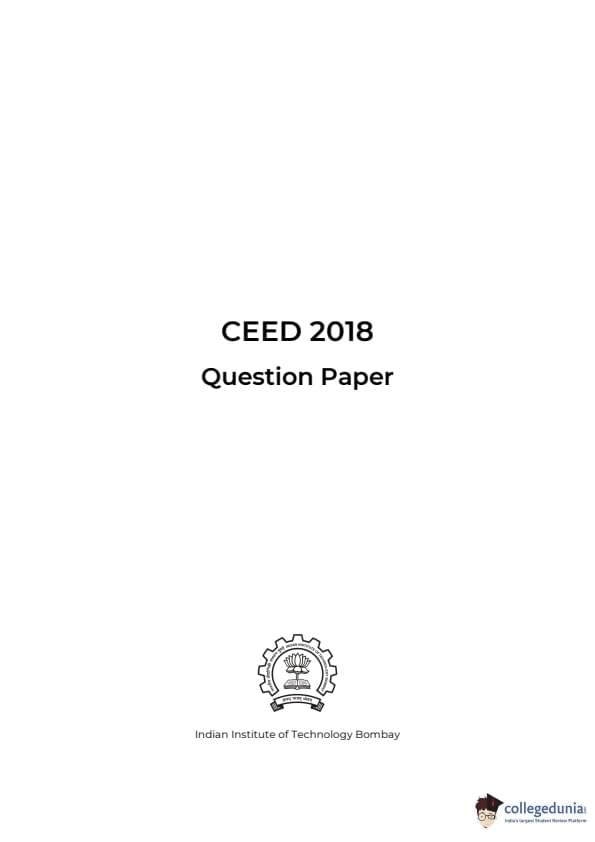
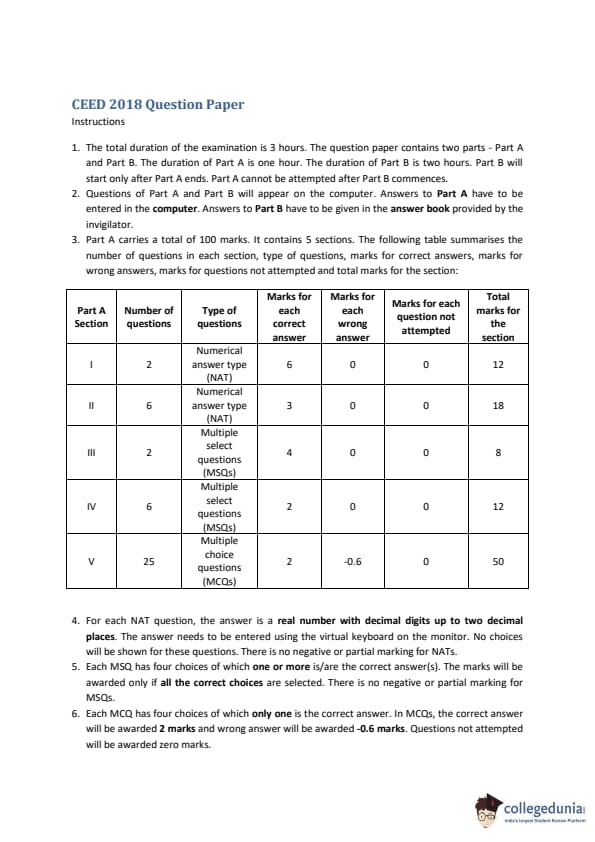

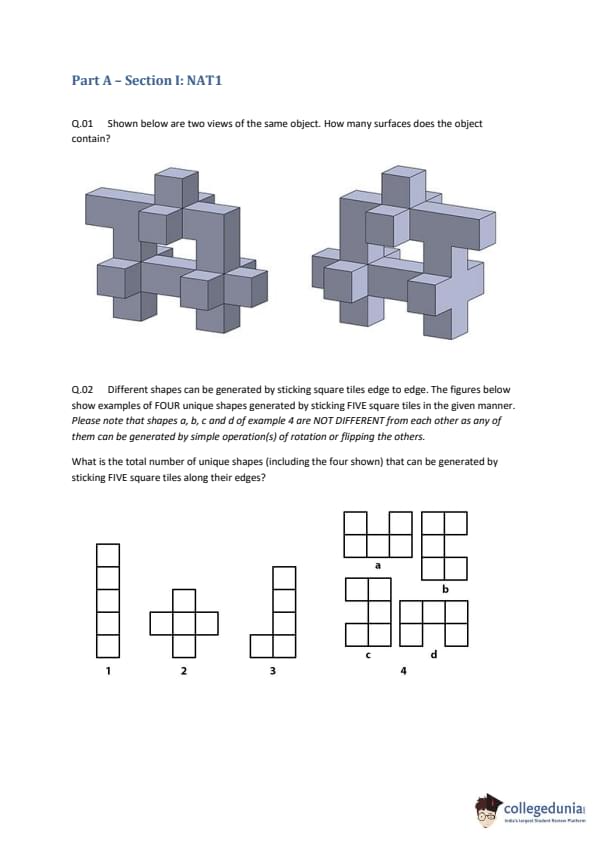
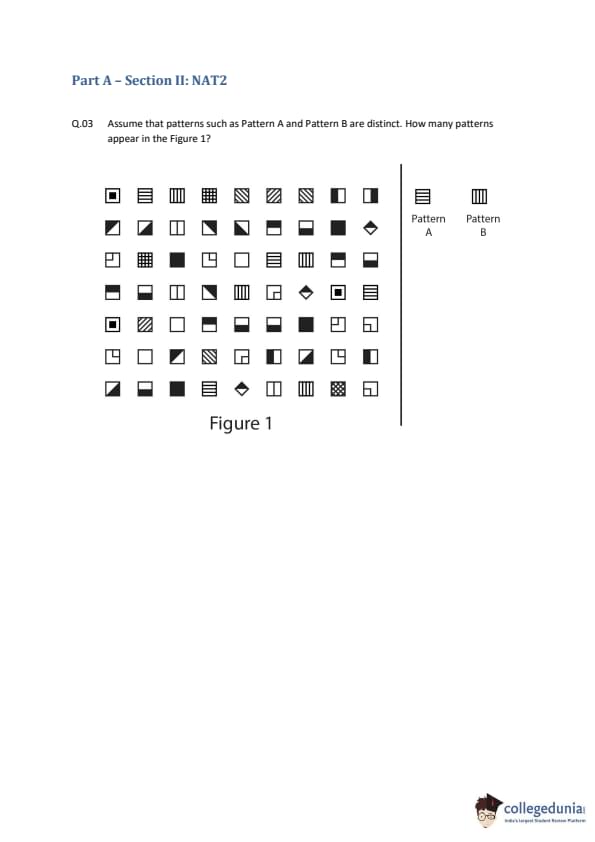
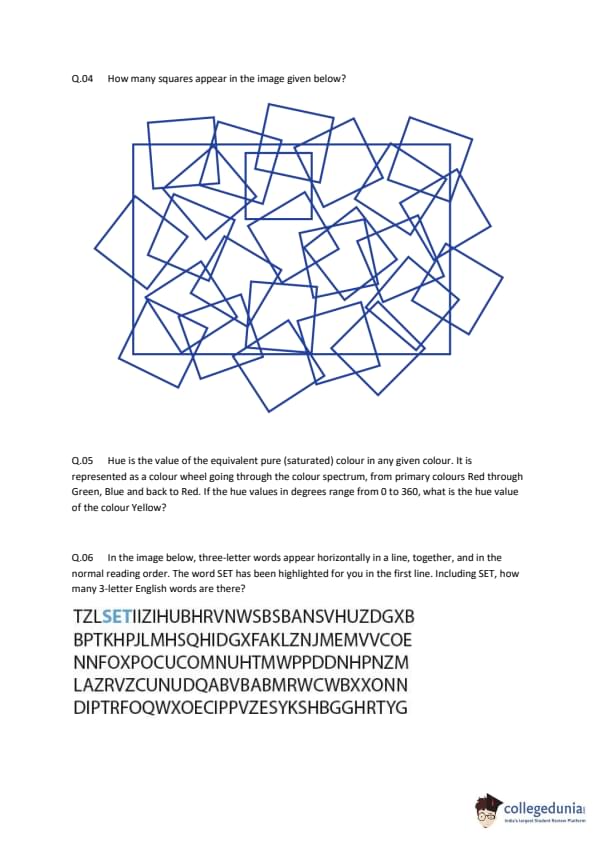
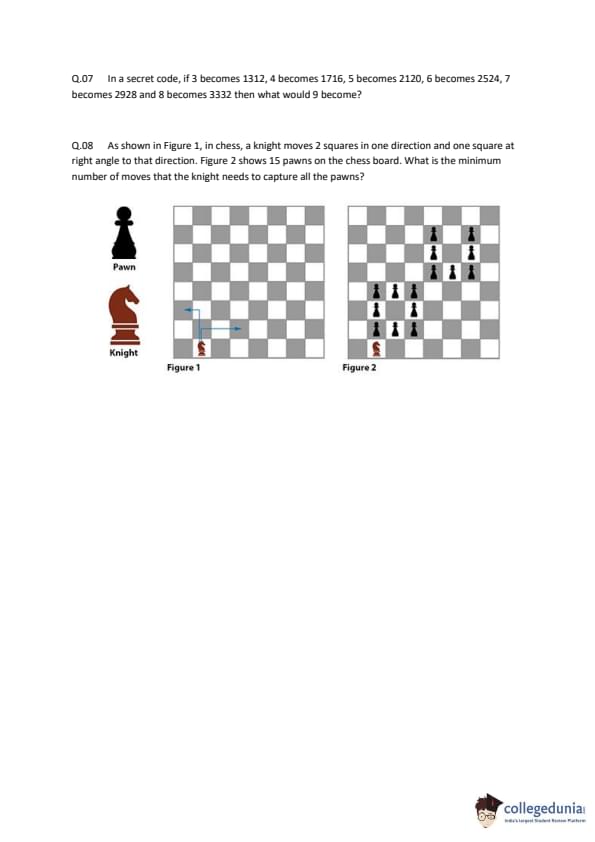
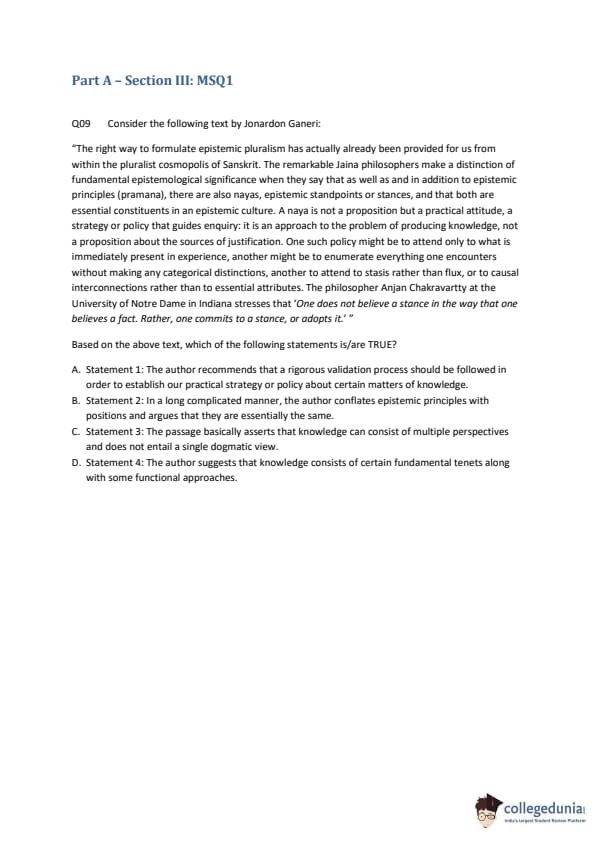

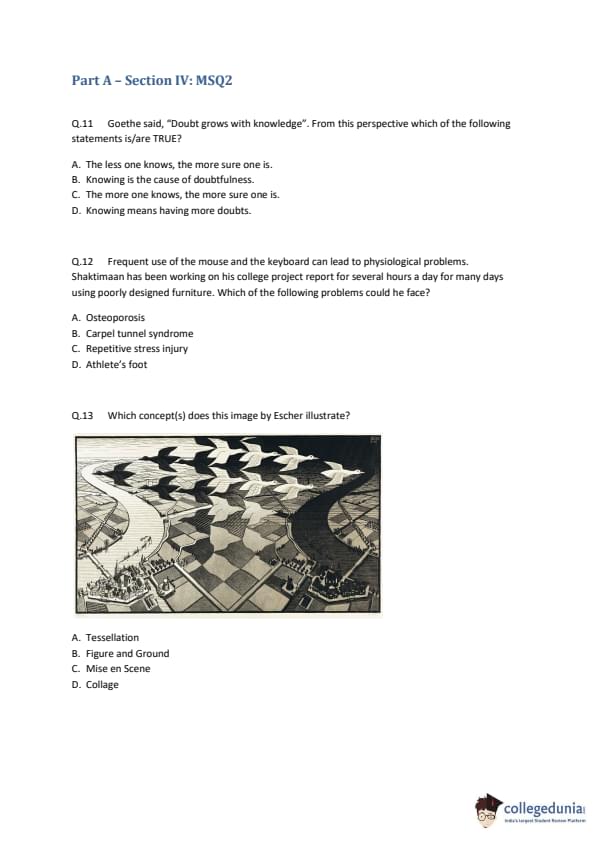


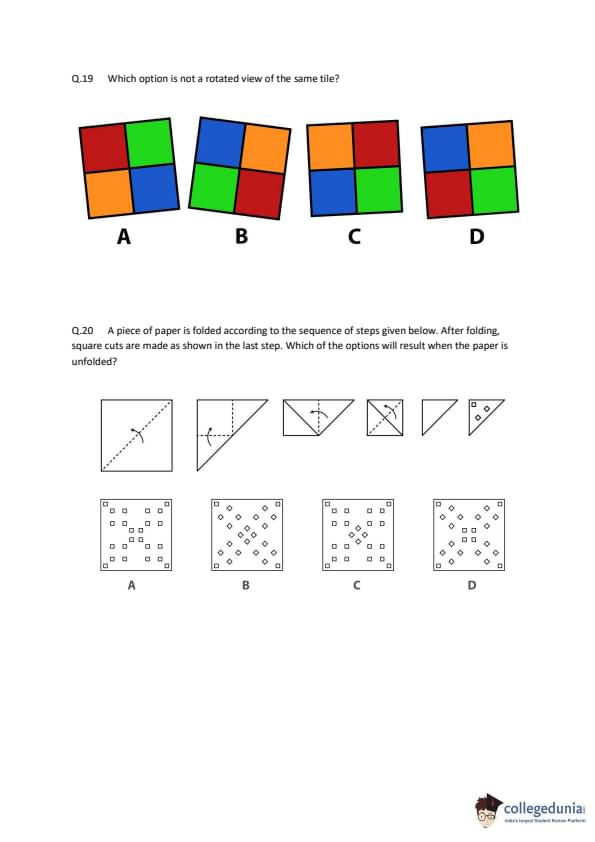
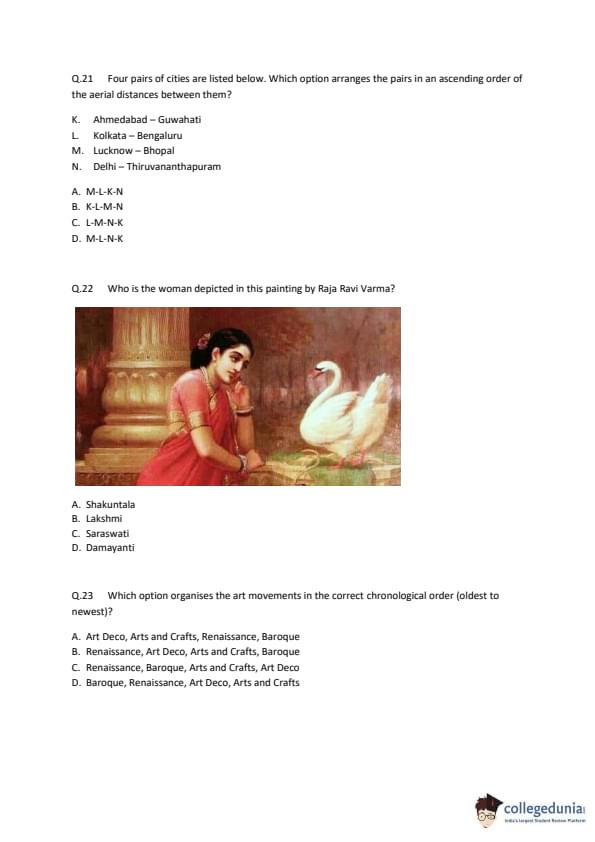
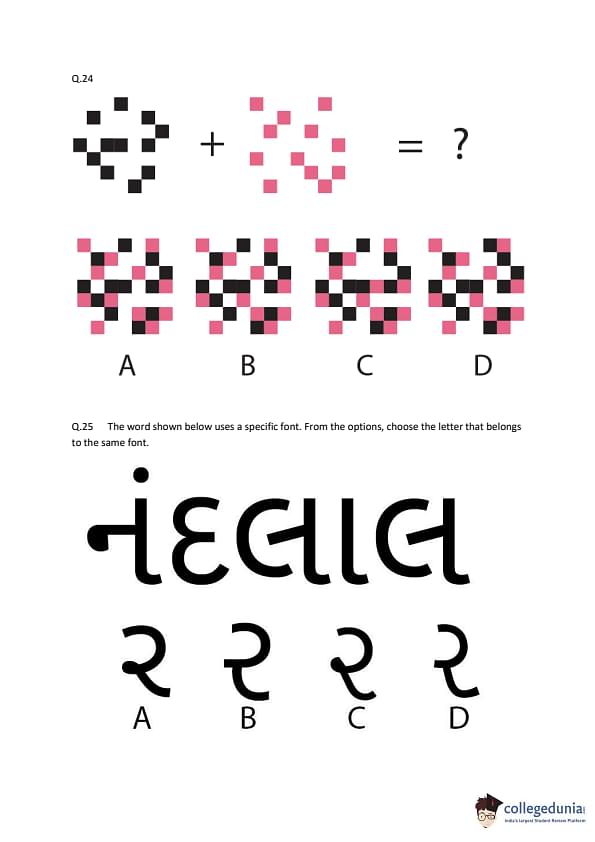
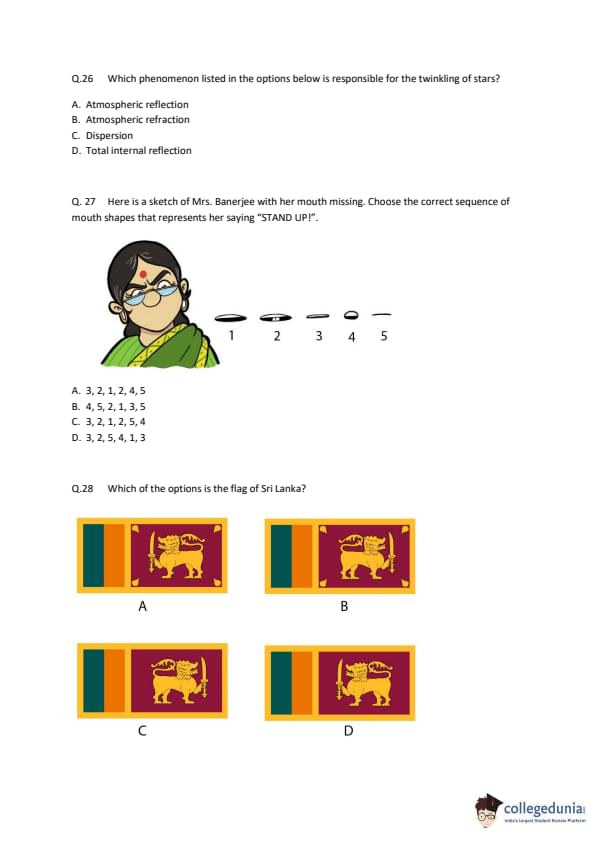
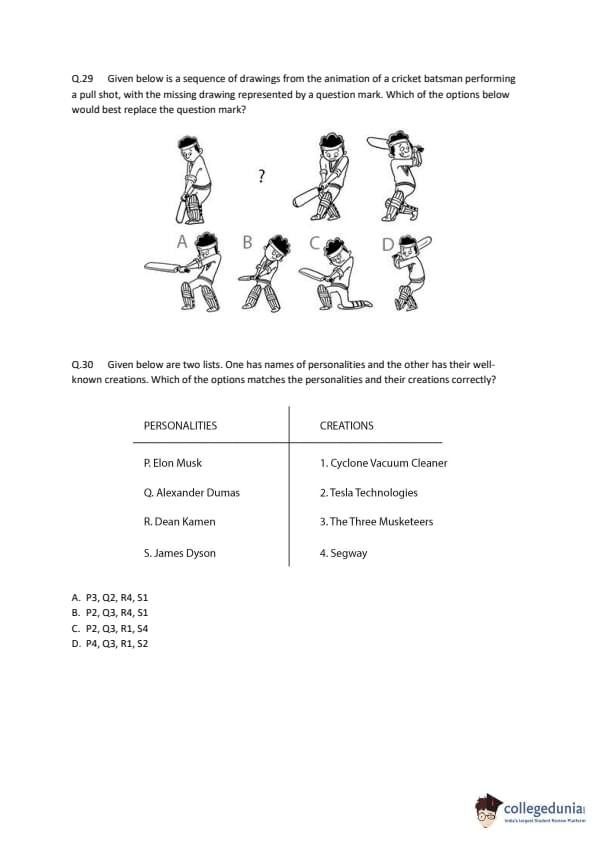

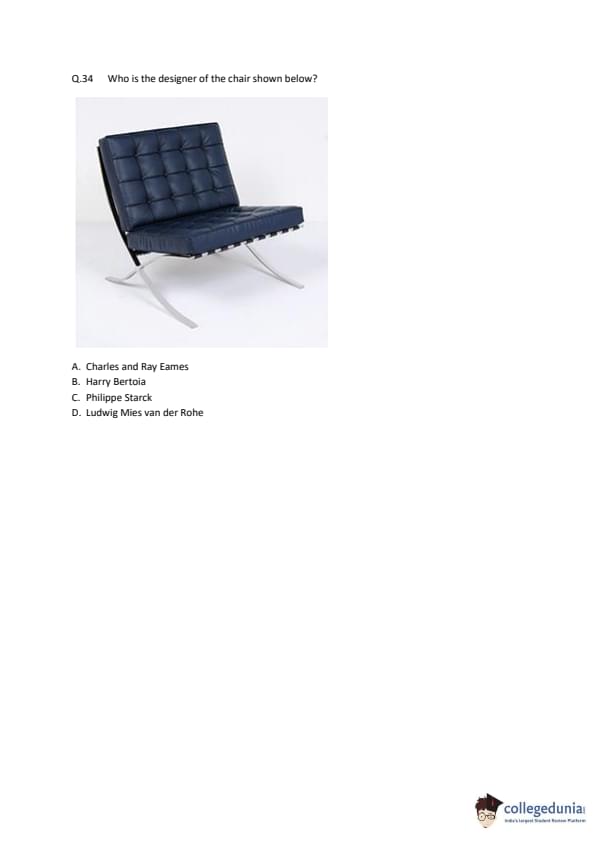
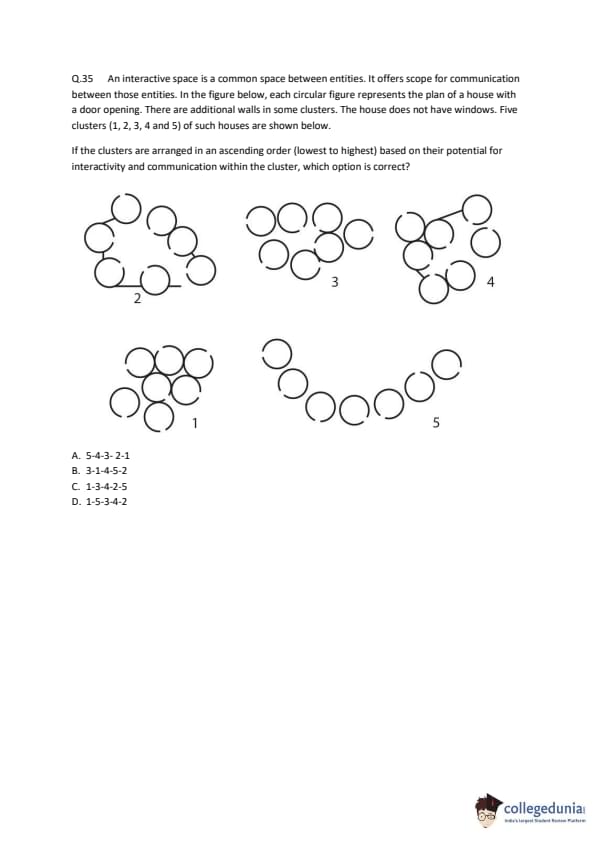
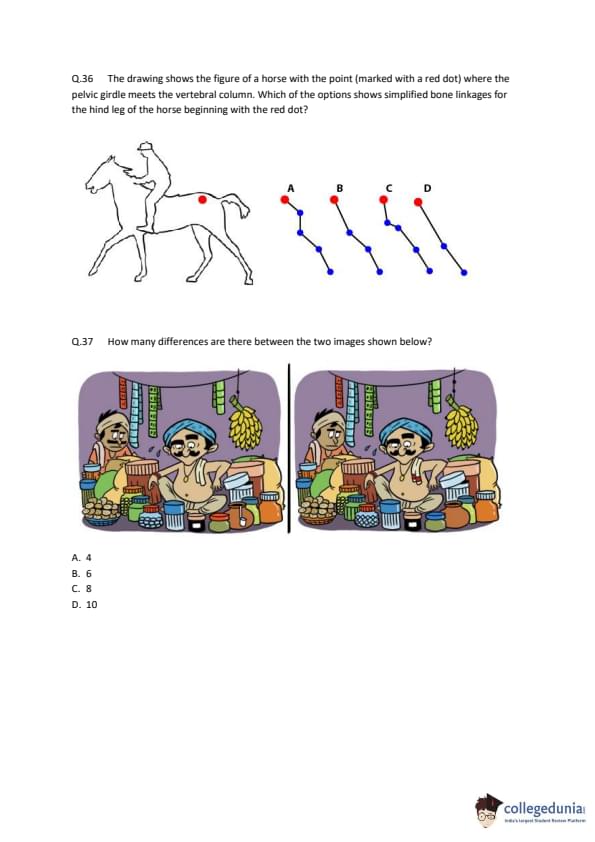
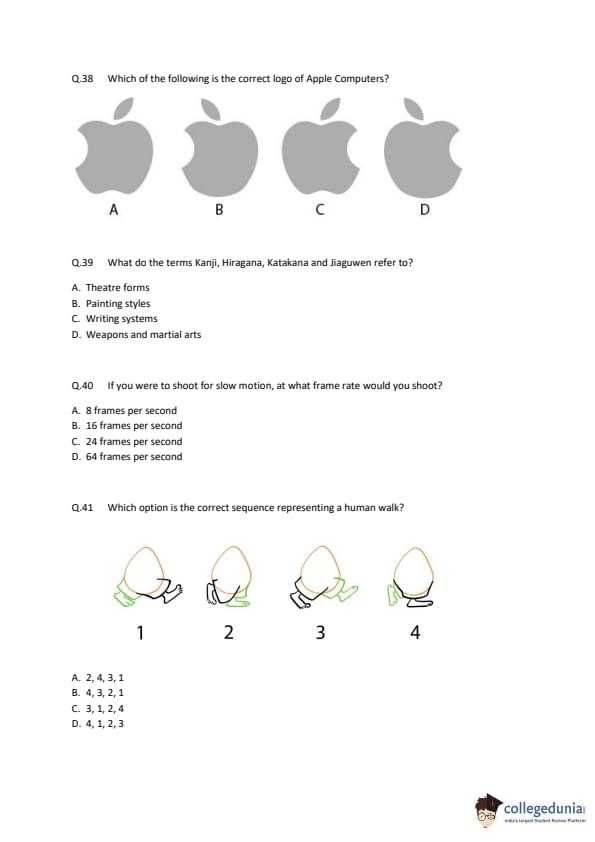
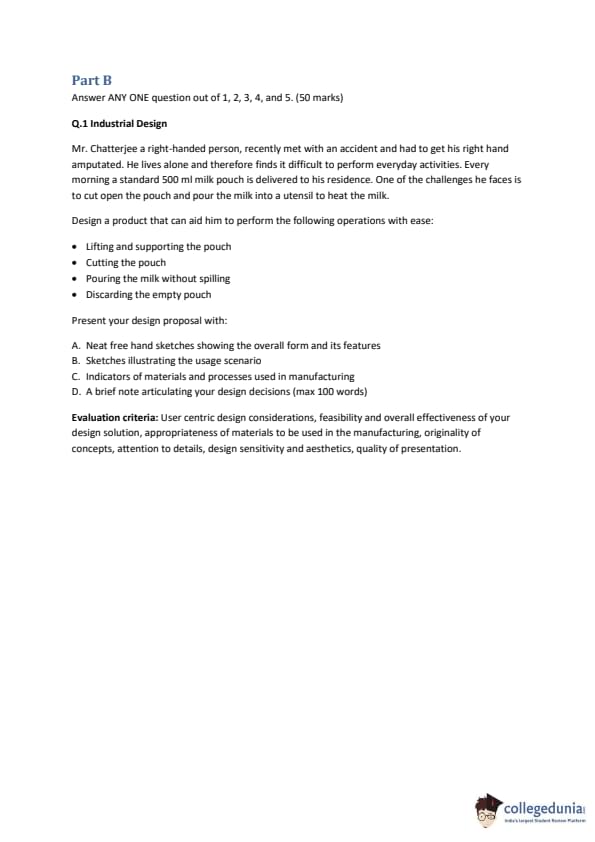

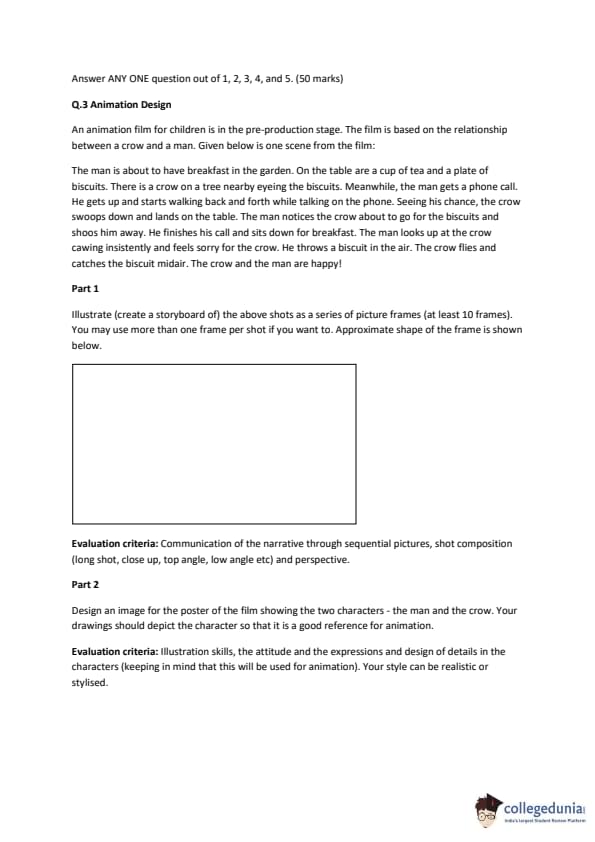

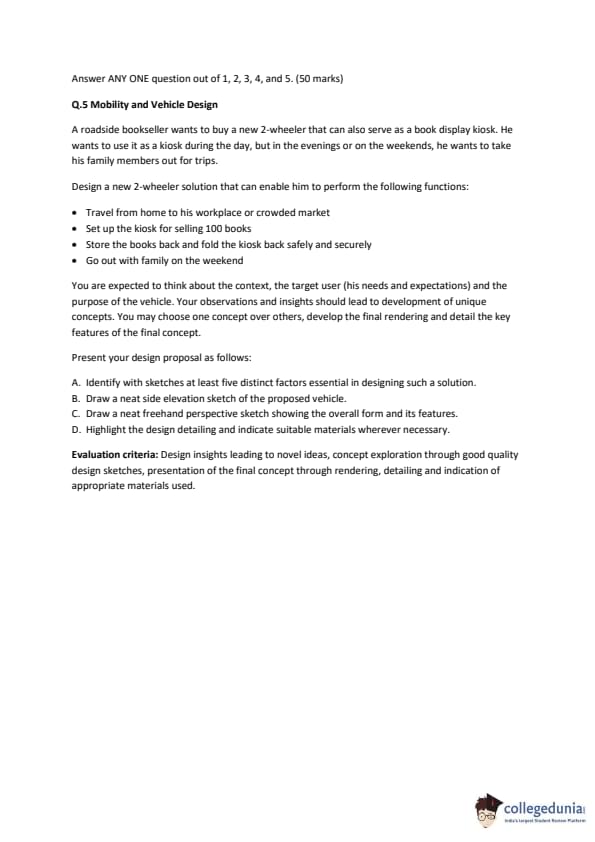
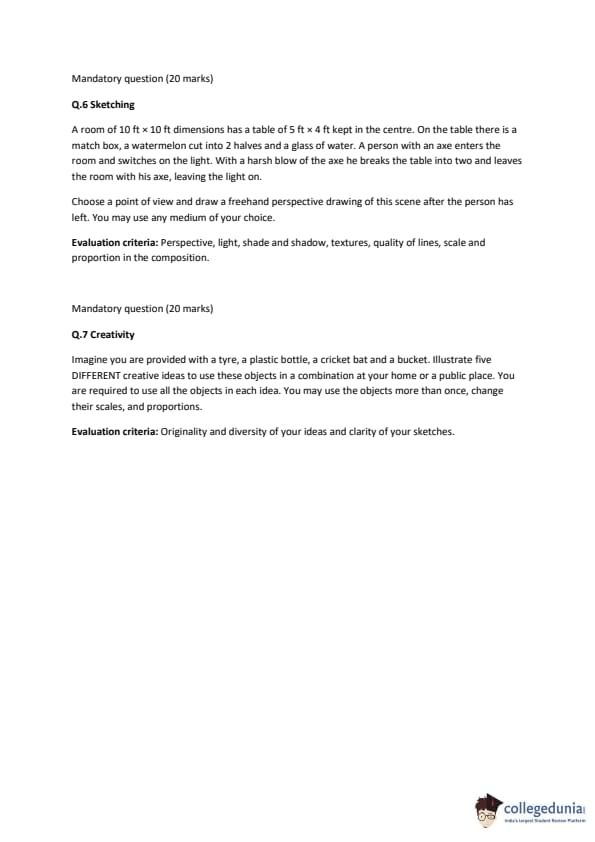

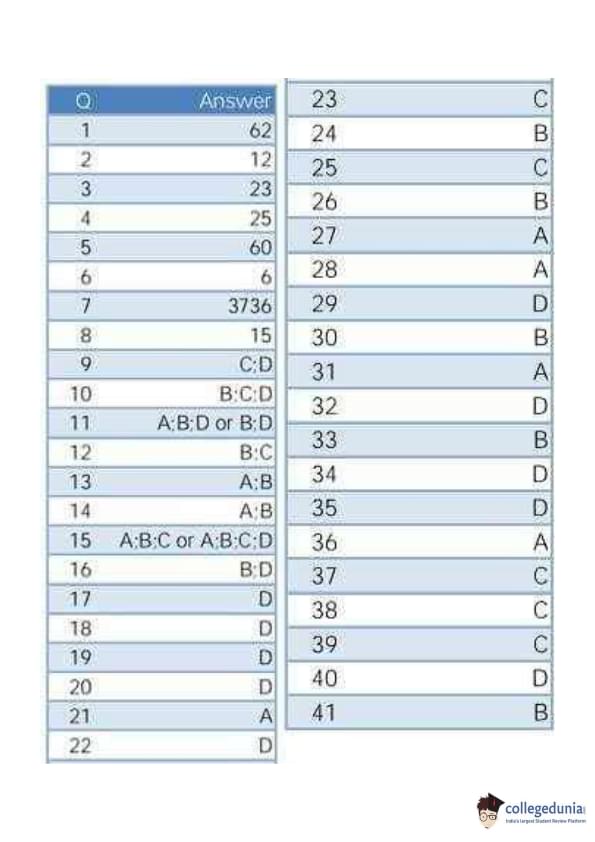



Comments